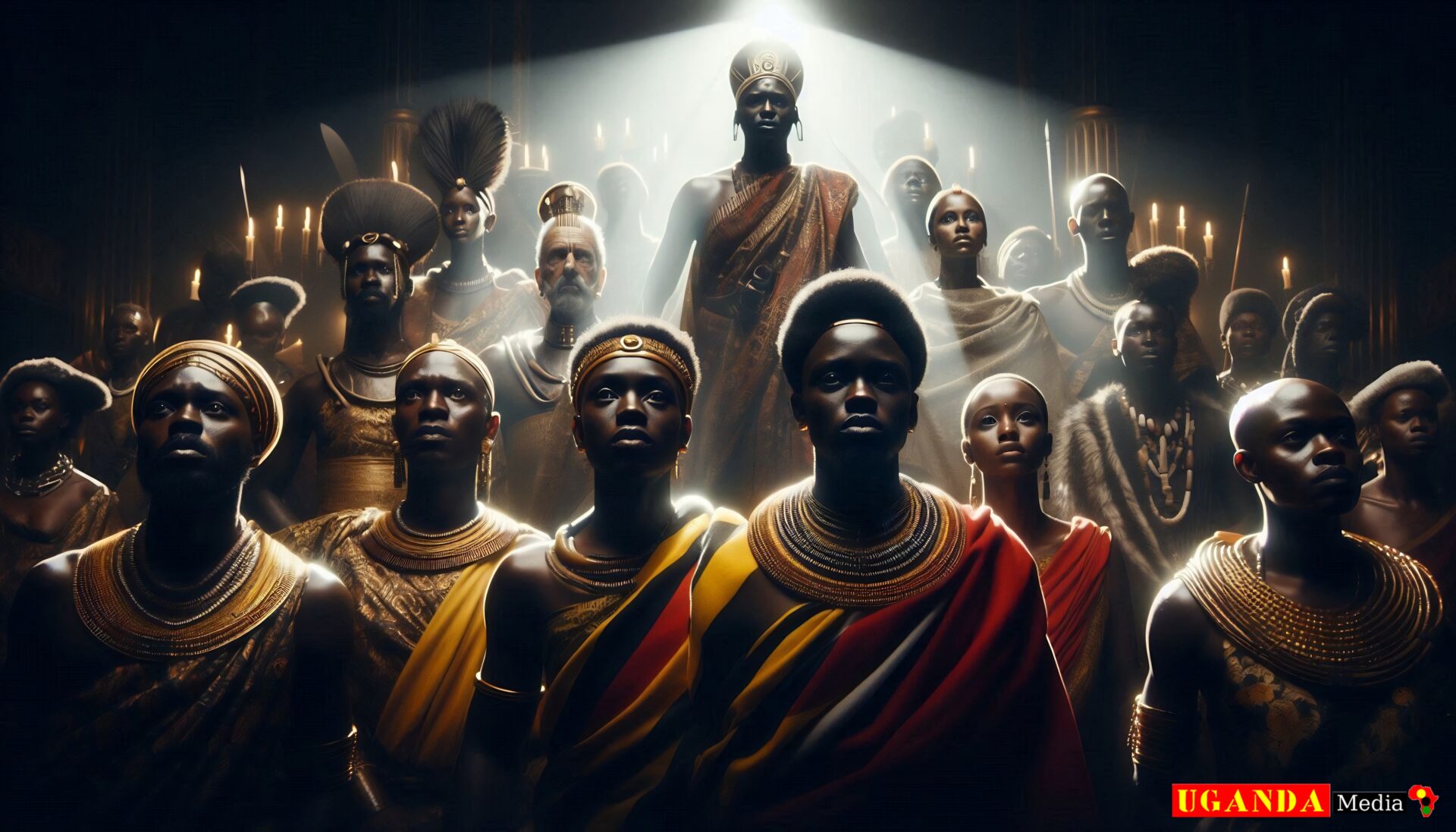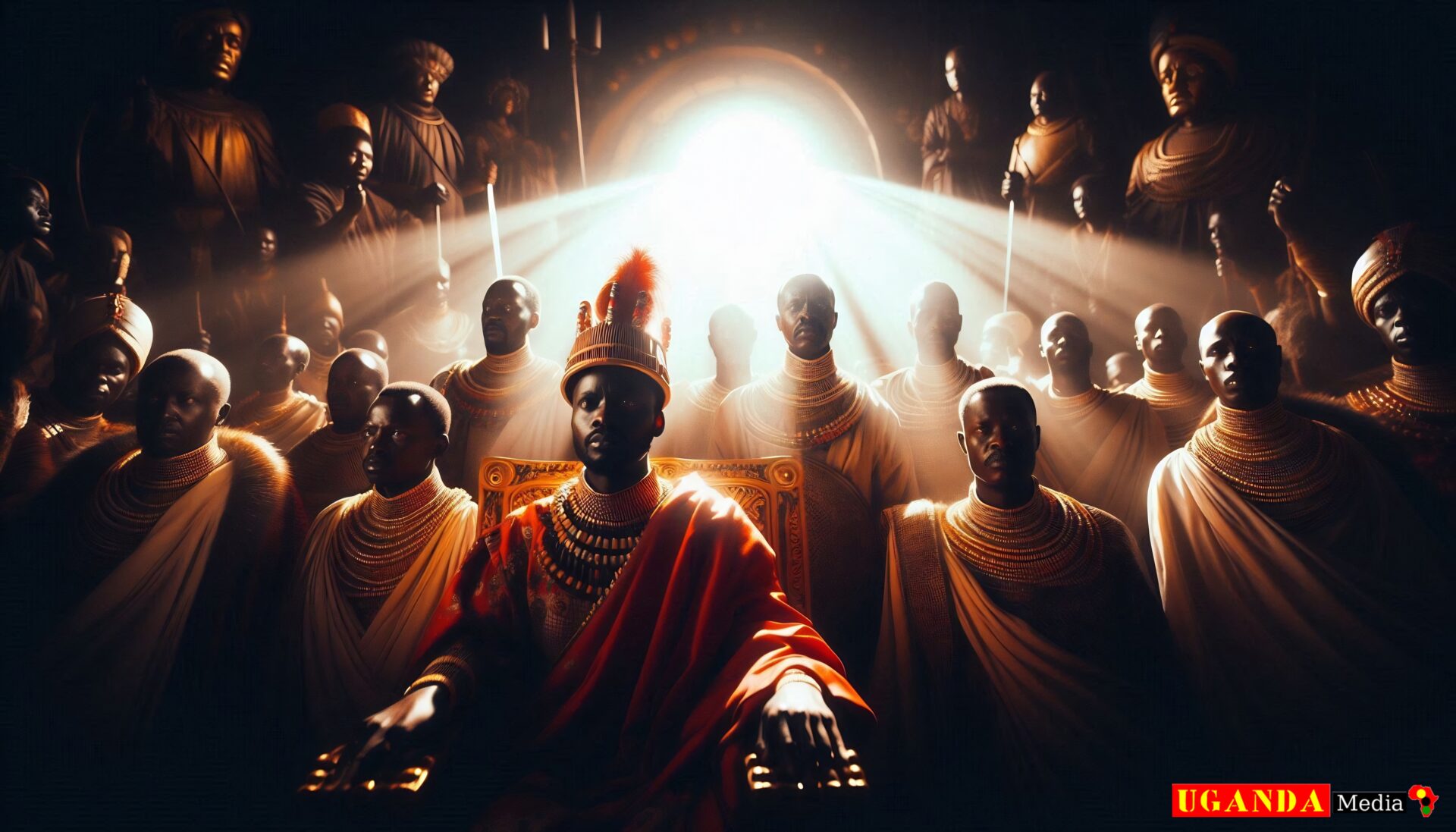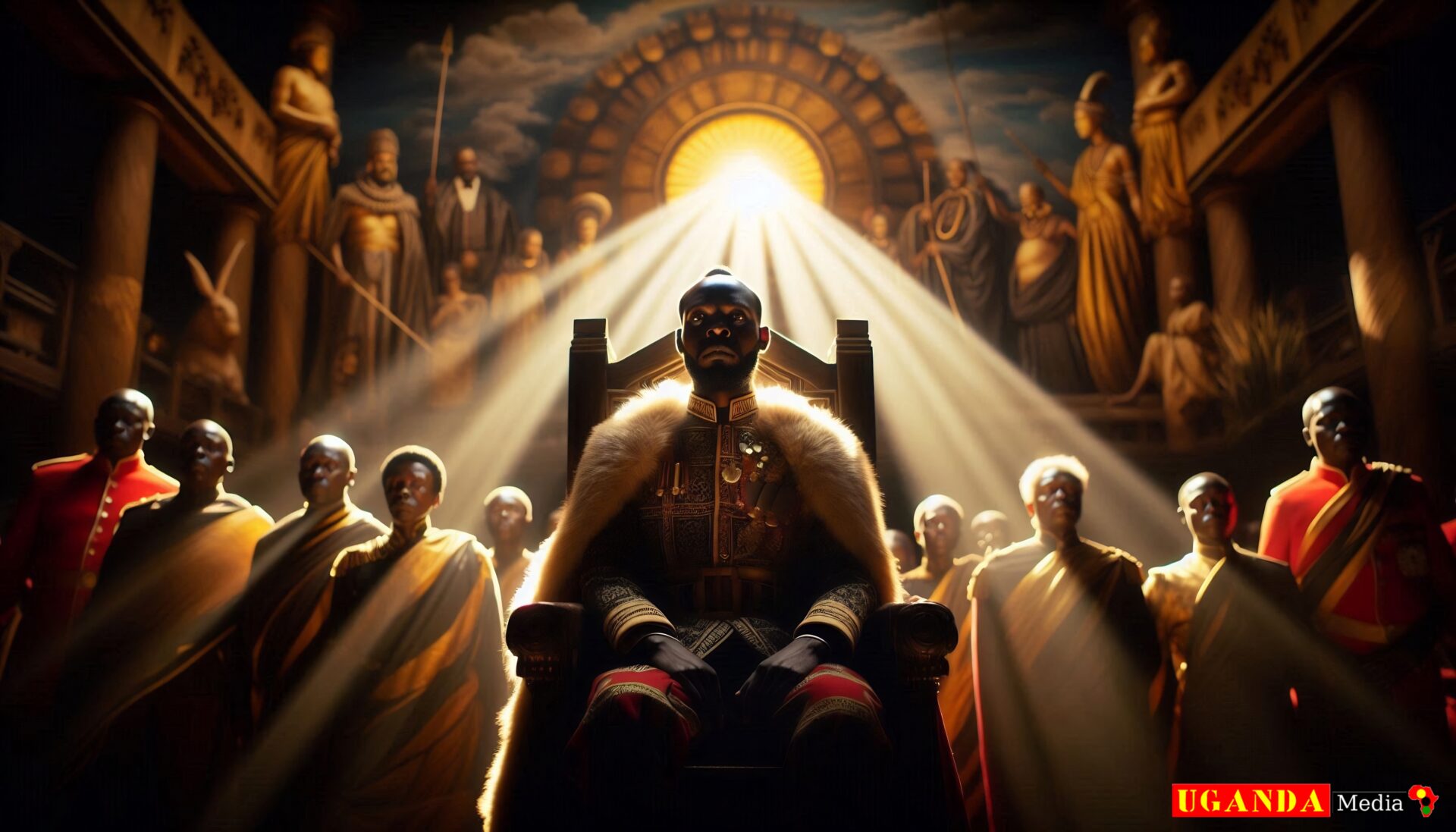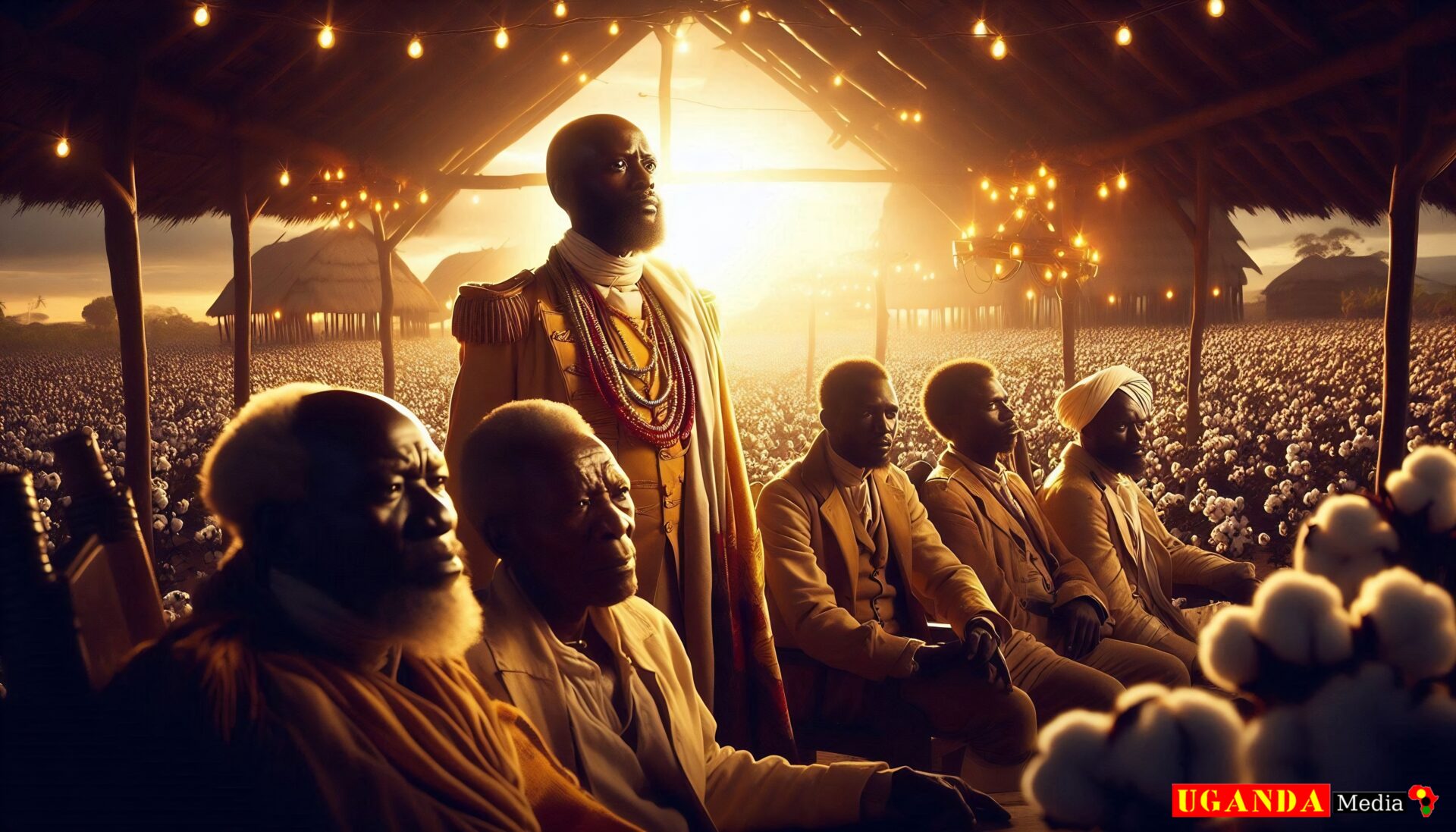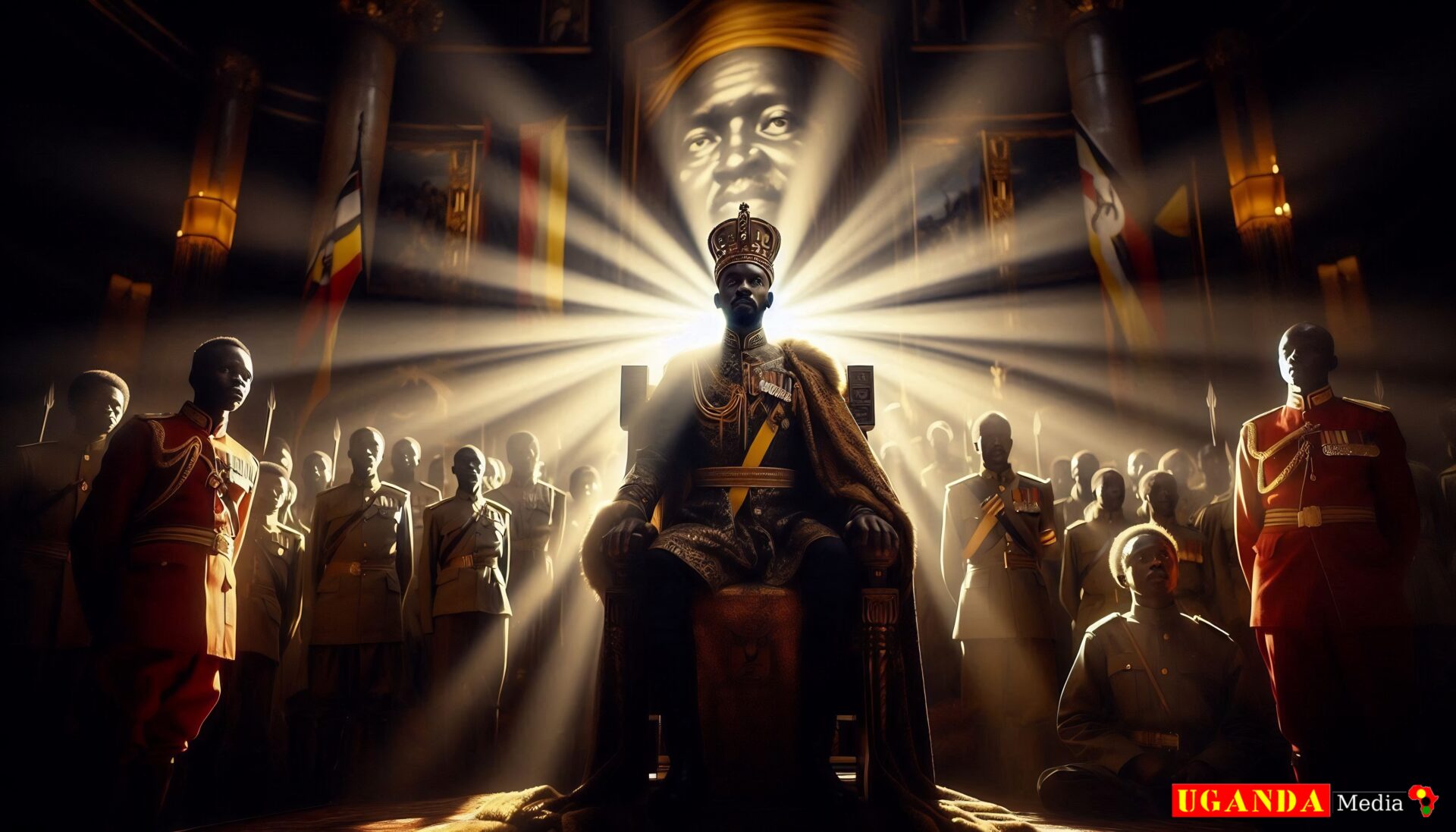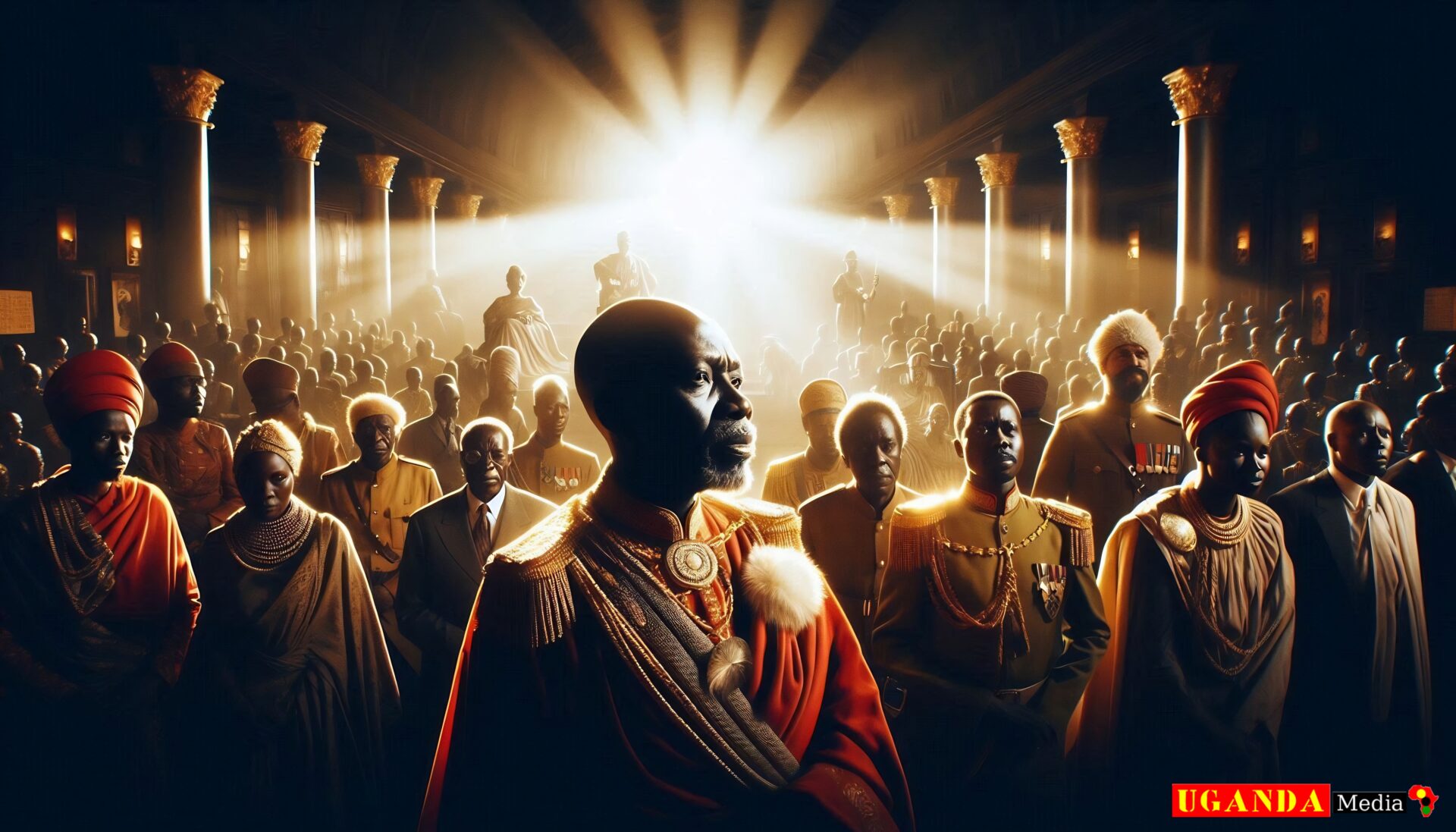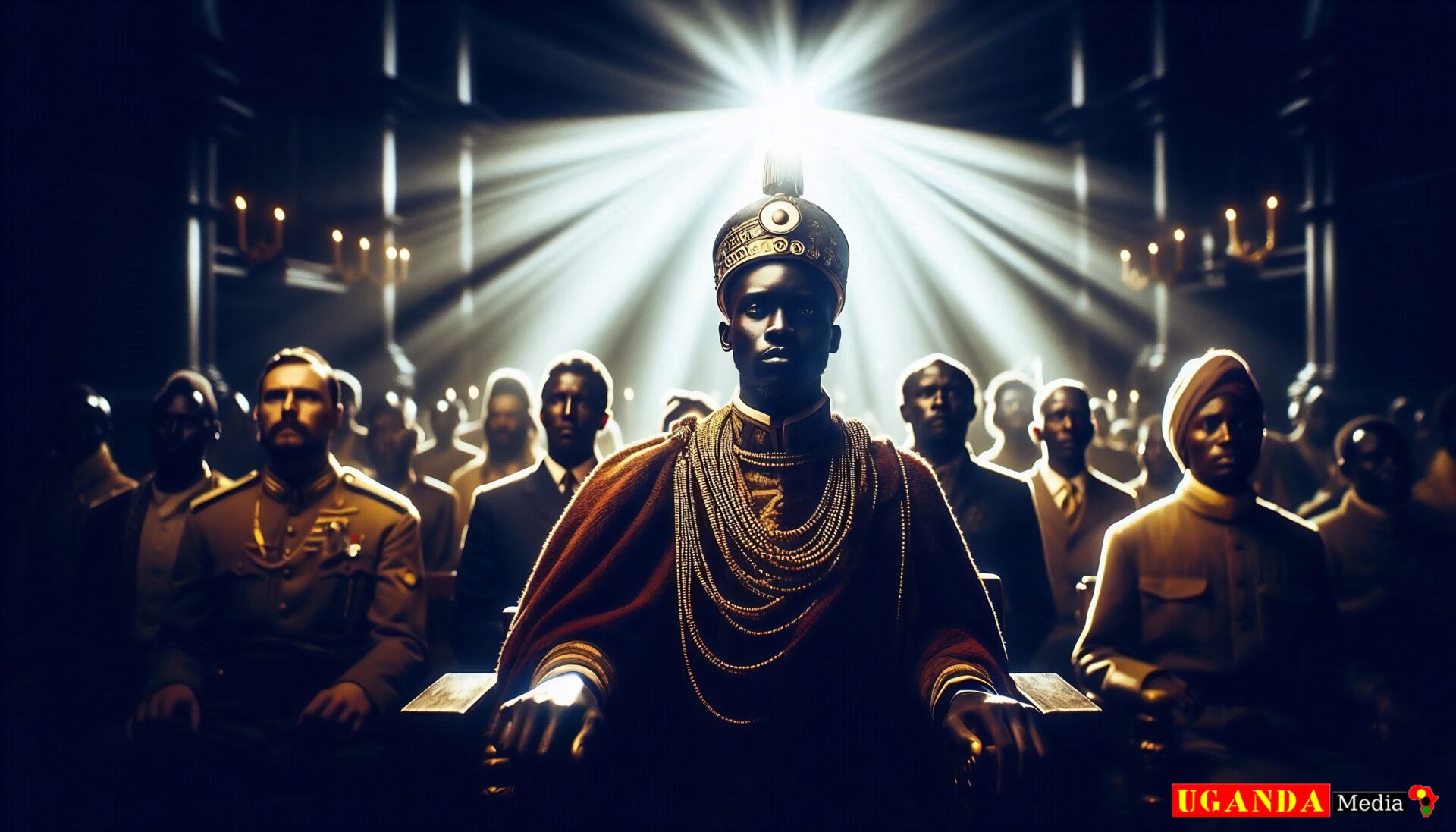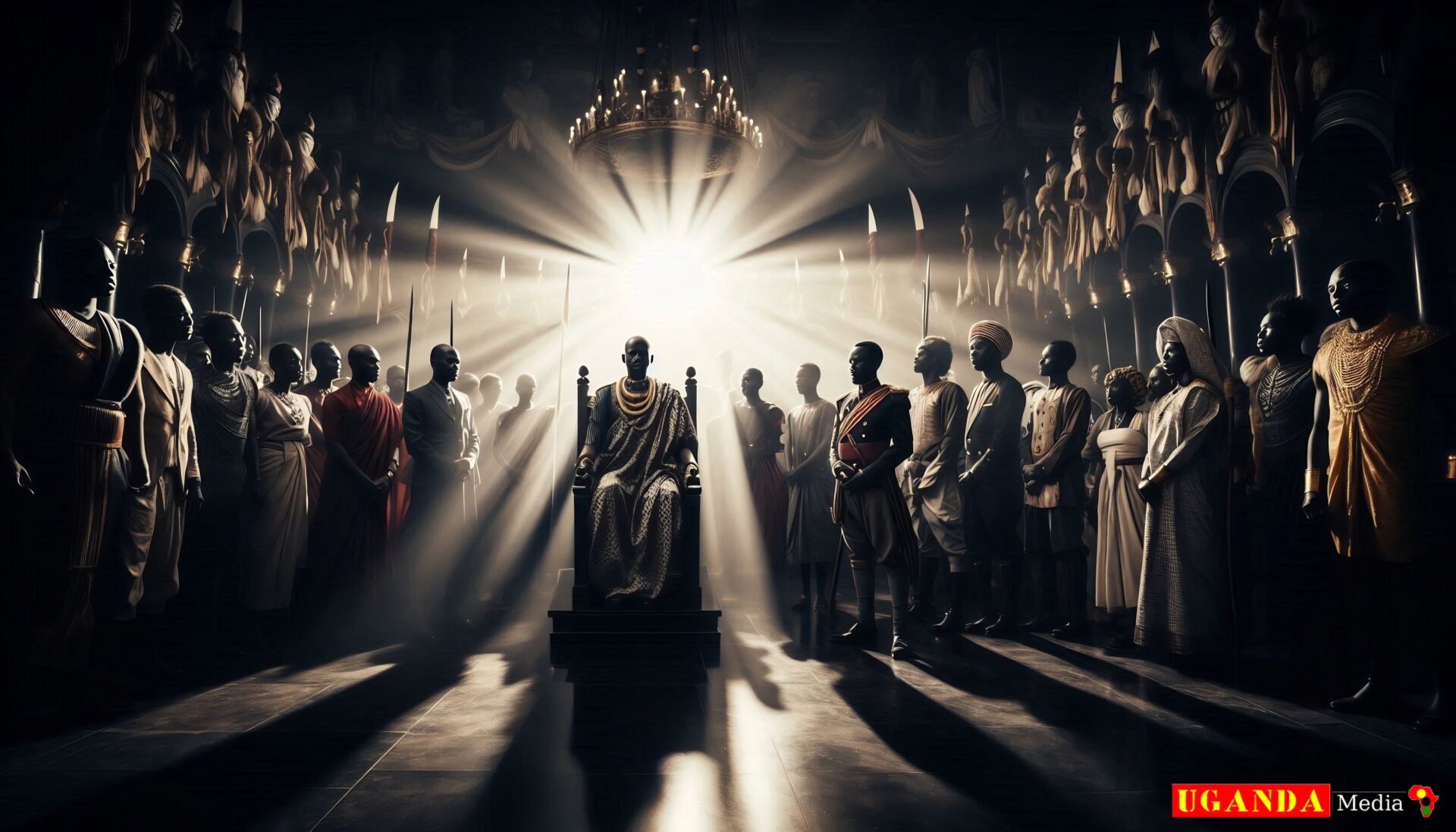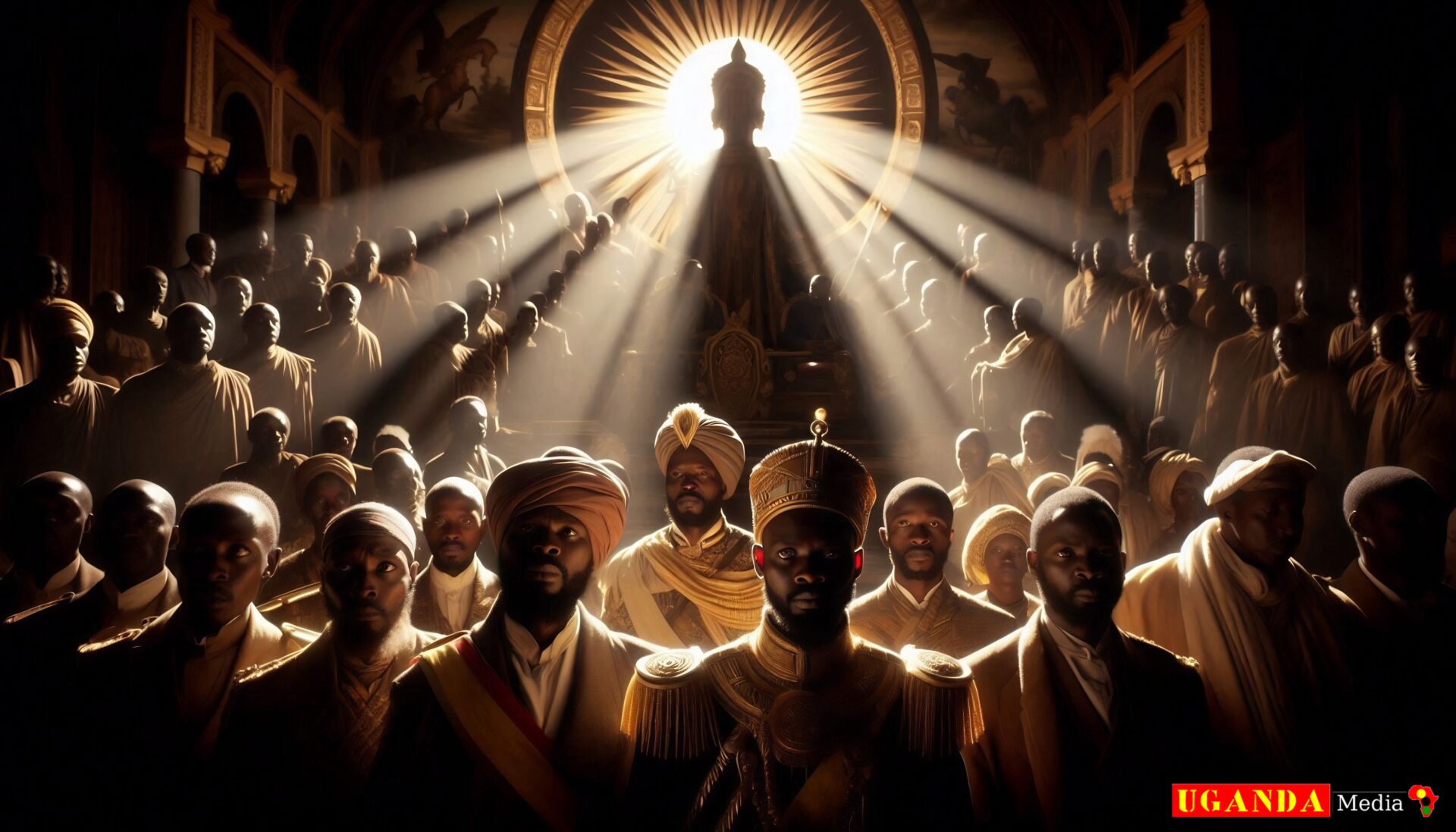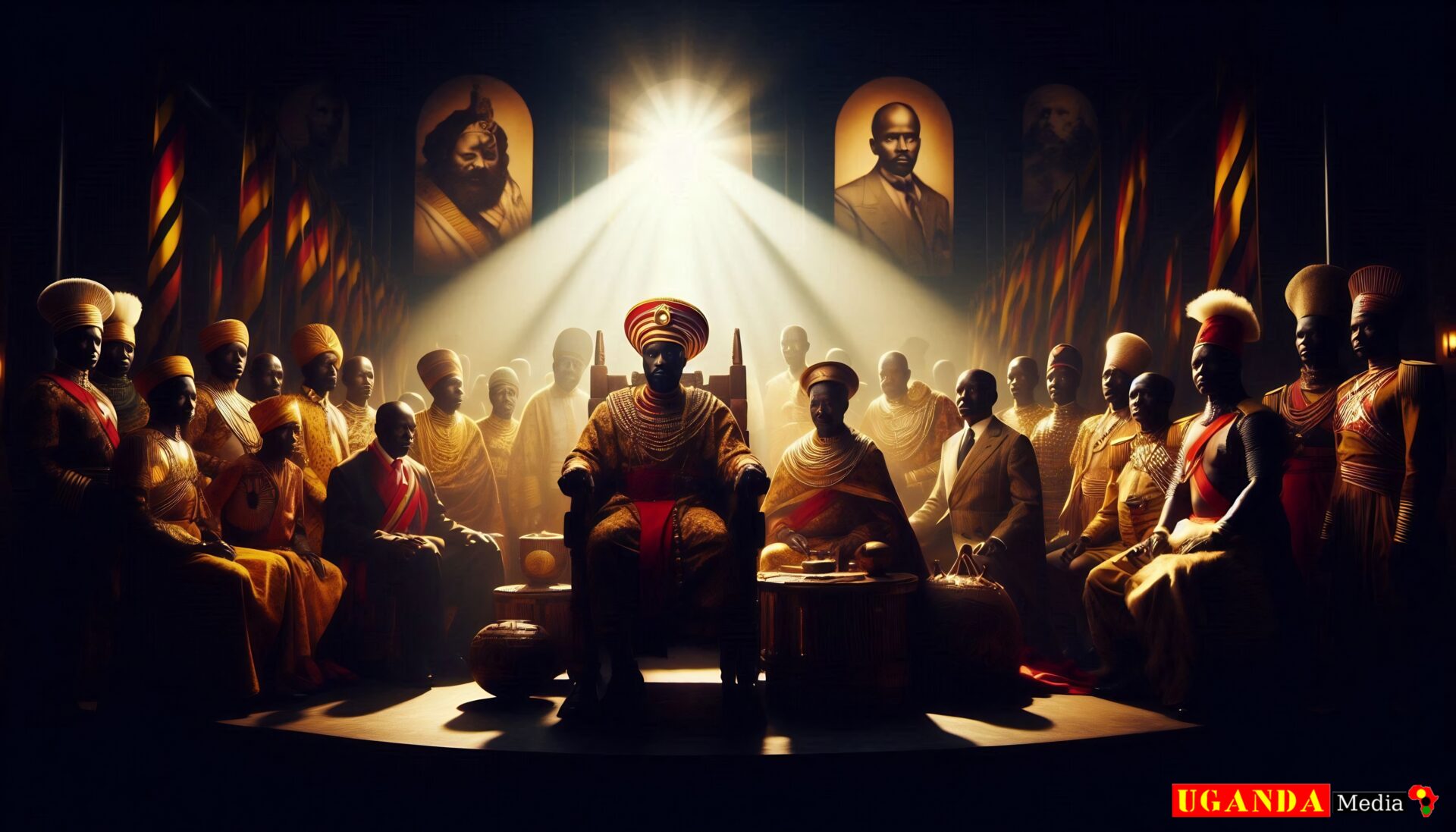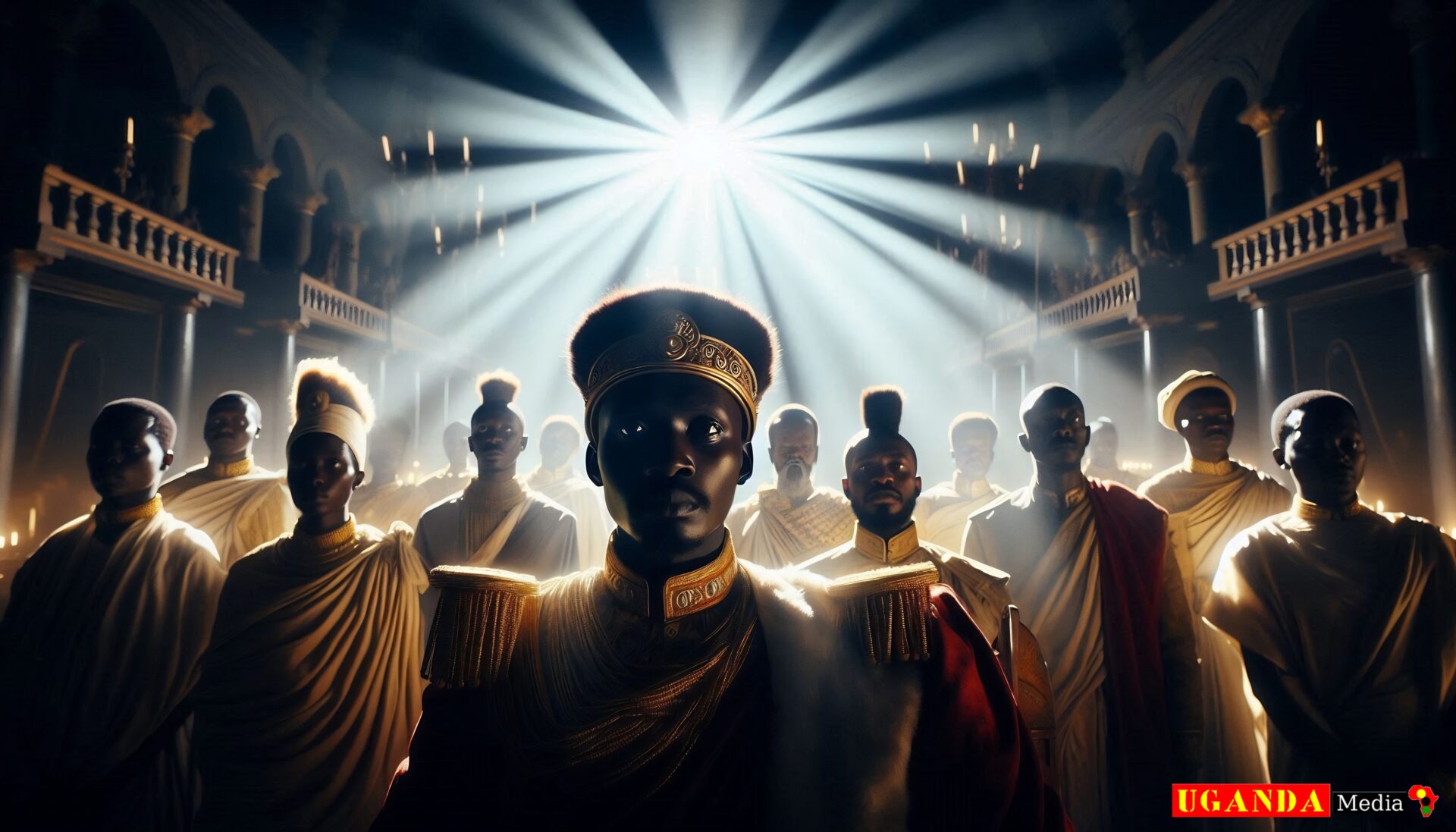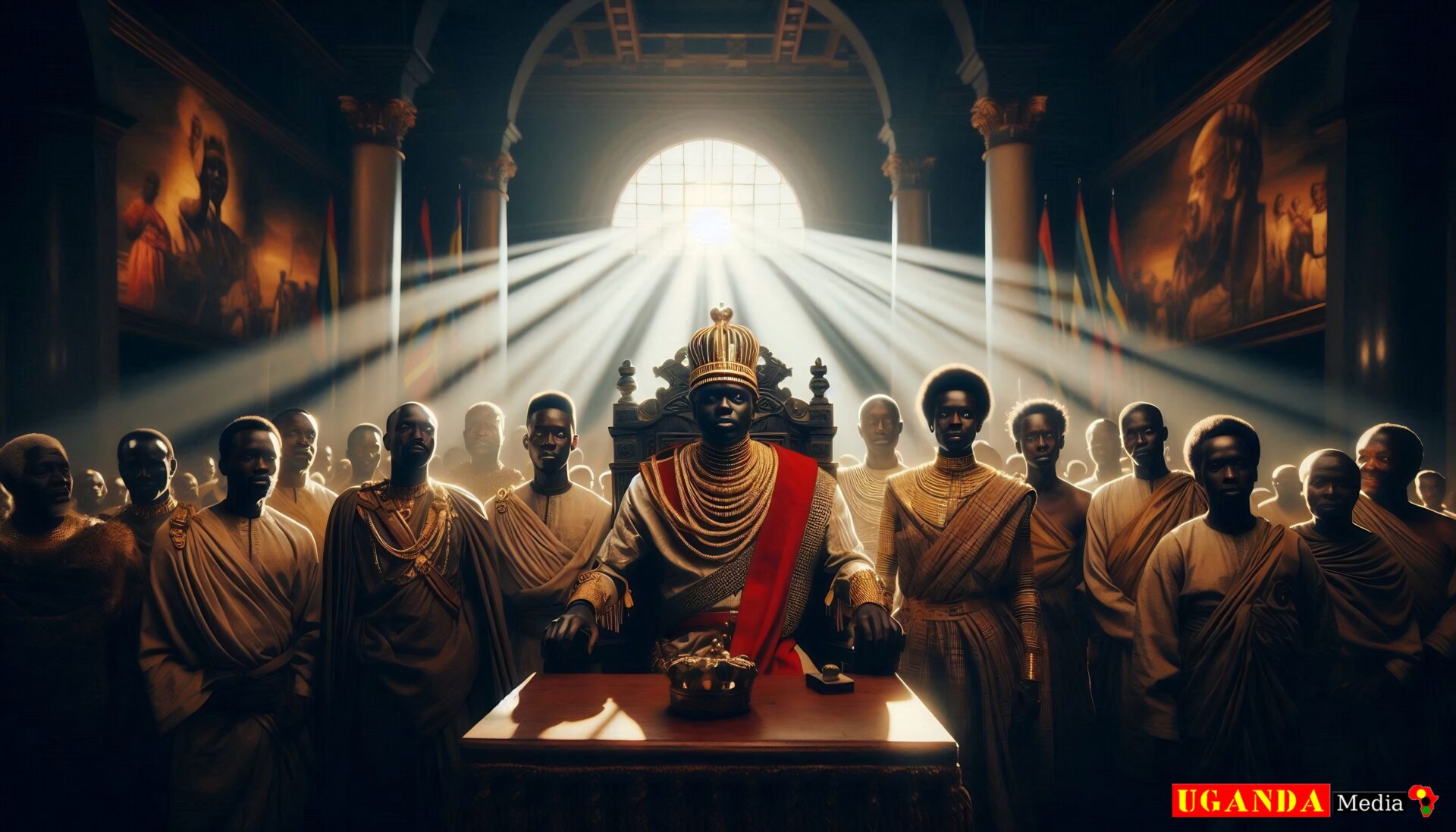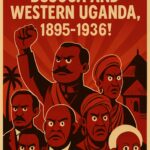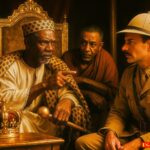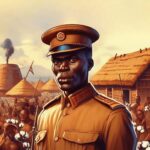Unpacking the Political Transformation of Northern Busoga: A Journey Through Power, Culture, and Identity (1600-1900)
The political transformation of Northern Busoga between 1600 and 1900 stands as a compelling case study of state formation in precolonial Africa. Nestled between the Nile River to the west and Lake Victoria to the south, this region witnessed the rise of numerous polities shaped by the dynamic interplay between immigrant Luo-speaking groups like the Owiny Karuoth and indigenous Bantu-speaking communities. Far from a simple narrative of conquest, the emergence of centralized authority in Northern Busoga was a nuanced process driven by cultural convergence, strategic alliances, and economic integration.
This article delves into the intricate mechanisms through which dominance was constructed, exploring how marriage alliances, trade networks, and ideological shifts facilitated the rise of Owiny Karuoth descendants as rulers over non-Karuoth populations. It also examines enduring legacies, such as the pervasive mulangira-mukopi status differentiation system, which continue to influence clan identities, social hierarchies, and administrative boundaries in modern Busoga. From the Ikanda zone’s role as a gateway to wider regional networks to the Kakolo area’s significance as a crossroads of power, we uncover the layered transformations that defined this historically significant borderland.
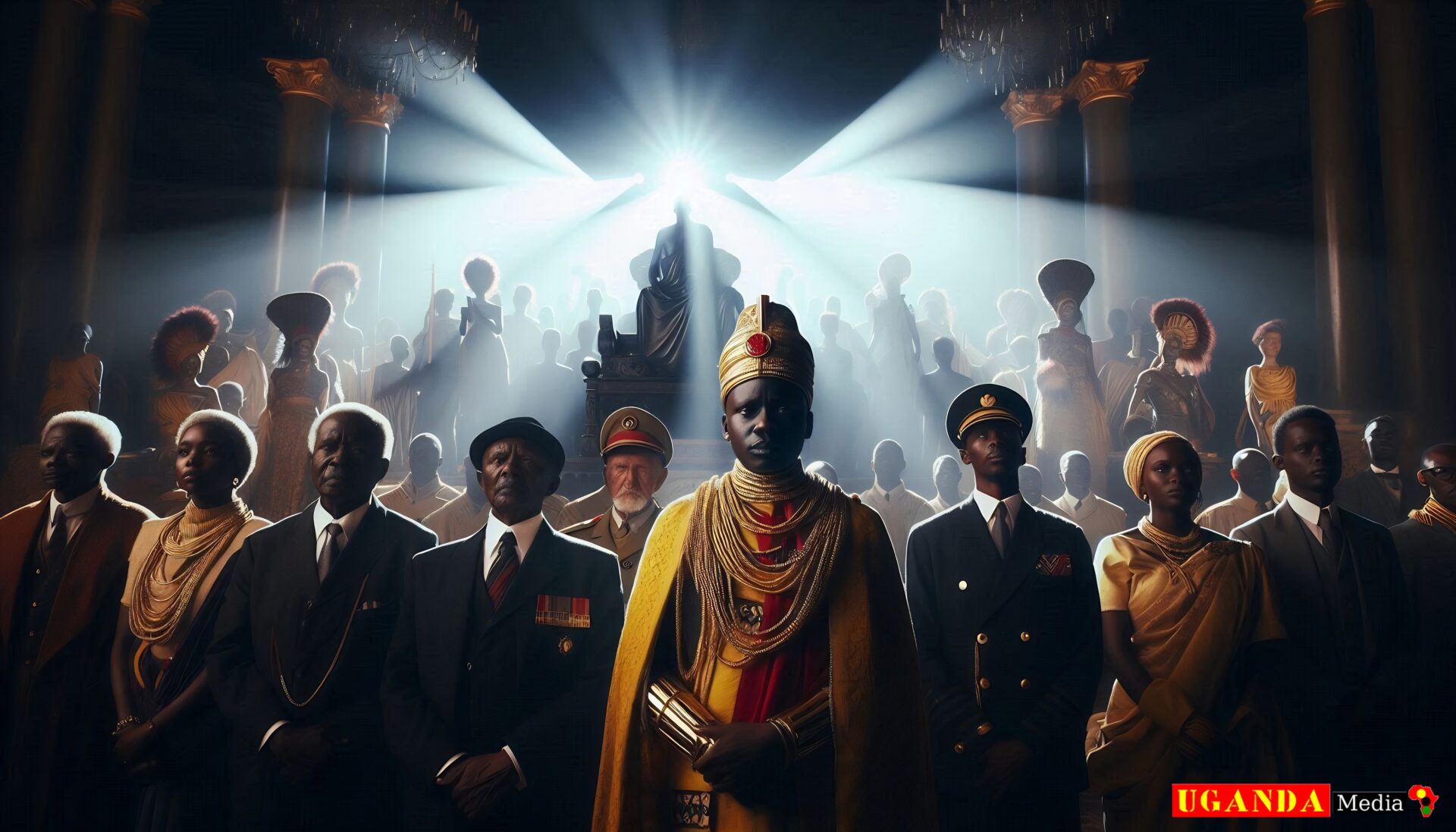
By addressing counterarguments to traditional conquest theories and highlighting alternative perspectives on coalescent state formation, this exploration challenges conventional narratives and invites readers to rethink the complexities of power dynamics in precolonial Africa. Through a detailed analysis of migration patterns, cultural practices, and resistance movements, we gain valuable insights into the enduring interplay between difference and connection—a testament to human adaptability and ingenuity. Join us as we journey through Northern Busoga’s rich history, where borders are continually renegotiated, and identities are forged through dialogue and interaction.
The Strategic Importance of Northern Busoga
Nestled between the verdant landscapes of Lake Victoria to the south and the winding Nile River to the west, Northern Busoga occupied a pivotal position in the heart of East Africa’s trade networks. This region, which straddled key trade routes linking Lake Victoria, Bunyoro, and Buganda, emerged as a nexus of economic activity and cultural exchange during the precolonial era. Its geography shaped its destiny and rendered it indispensable to the broader dynamics of commerce, politics, and intercultural interaction across Uganda.
A Crossroads of Trade
Northern Busoga was uniquely positioned at the intersection of major trade arteries that connected some of the most influential kingdoms and regions of the time. To the south, Lake Victoria—the world’s second-largest freshwater lake—facilitated waterborne trade, enabling goods such as ivory, salt, iron tools, and barkcloth to flow across vast distances. Meanwhile, the Mpologoma River system provided natural conduits for movement into the interior, linking Northern Busoga with the fertile plains of Bunyoro-Kitara Kingdom to the northwest and the politically powerful Buganda Kingdom to the southwest. These routes were not merely pathways for commodities; they were lifelines through which ideas, technologies, and cultural practices spread, fostering a vibrant environment of innovation and adaptation.

For instance, archaeological and historical evidence suggests that Northern Busoga served as a critical hub for long-distance trade networks extending beyond its immediate borders. Goods originating from as far away as the Indian Ocean coast or the mineral-rich regions of Central Africa passed through this area, enriching local economies and elevating the status of those who controlled these routes. The Ikanda zone, encompassing the southern shores of Lake Kyoga, exemplified this role. It became a vital corridor for traders moving cattle, ivory, sesame, and iron products between northern Bunyoro, Buganda, and parts of what is now Teso and Samia. Such connectivity made Northern Busoga an attractive site for settlement, state formation, and the consolidation of power.
Cultural Exchange Along Linguistic Frontiers
Beyond its economic significance, Northern Busoga was a melting pot of cultures, where Bantu-speaking communities interacted extensively with immigrant groups like the Luo-speaking Owiny Karuoth. This linguistic and cultural diversity created fertile ground for alliances, marriages, and shared governance structures. The strategic advantage of controlling such a culturally rich borderland cannot be overstated. By situating themselves near densely populated zones and established trade networks, newcomers could leverage their distinct identities while integrating into existing social frameworks.
The Kakolo zone, located along the eastern banks of the Mpologoma River, illustrates this phenomenon vividly. Here, early settlements of immigrant groups such as the Nkono and Ngambani dynasties took root. Over generations, these groups forged ties with indigenous populations, gradually assuming dominant roles within the fabric of local society. Their proximity to the river allowed them to maintain strong connections with both northern Bunyoro and southeastern Busoga, ensuring their relevance in regional power dynamics.
Political Implications of Strategic Location
The centrality of Northern Busoga in trade and cultural exchange inevitably translated into political importance. Control over key nodes along trade routes often determined the rise and fall of polities. For example, the proto-capitals established by the Owiny Karuoth around Nang’oma Hill reflect a deliberate strategy to position themselves near economically significant areas. As these immigrant groups expanded their influence northward into sparsely populated zones, they simultaneously entrenched their dominance over densely settled regions to the south. This dual approach ensured access to resources while securing legitimacy among subordinate populations.
Moreover, the region’s location rendered it a contested space, particularly as external powers sought to extend their reach. In the mid-19th century, Buganda’s attempts to exert influence east of the Nile exemplify how Northern Busoga’s strategic value attracted intervention from neighboring kingdoms. While initial efforts focused on consolidating control north of the Tororo-Iganga-Jinja road, Buganda later shifted its base southward, underscoring the region’s enduring appeal as a fulcrum of power.
In summary, Northern Busoga’s strategic importance lay in its unparalleled access to trade routes, its role as a cultural contact zone, and its centrality to regional power struggles. Whether viewed through the lens of economics, culture, or politics, this region stood out as a linchpin of activity in precolonial Uganda. Its ability to connect disparate regions and peoples underscored its indispensability, shaping not only its own trajectory but also the histories of those who sought to harness its potential. From the bustling markets of southern Busoga to the open grasslands of the north, every corner of this borderland bore witness to the intricate dance of ambition, cooperation, and transformation that defined an era.
Pre-Luo Political Authority: The Foundations of Power in Northern Busoga
Before the arrival of Luo-speaking groups, non-Luo Bantu communities in Northern Busoga had already established intricate systems of governance and authority. These early political structures were not merely rudimentary or disorganised; they represented sophisticated mechanisms of social organisation that laid the groundwork for later state formation in the region. This period, spanning several centuries prior to the 16th century, reveals a dynamic interplay of cultural, economic, and political forces within the broader lakes plateau region of Uganda.
Centres of Authority Among Non-Luo Bantu Groups
The pre-Luo era in Northern Busoga was characterised by the existence of significant centers of political authority controlled by Bantu-speaking communities. These centers were often located near fertile agricultural lands, trade routes, and water sources, reflecting the strategic importance of geography in shaping power dynamics. For instance, settlements along the Mpologoma River system and the southern shores of Lake Kyoga served as hubs of production, trade, and governance. Archaeological evidence, combined with oral traditions, suggests that these communities practised mixed economies—combining agriculture, fishing, herding, and long-distance trade—which provided the material basis for their political stability.
One notable example is the “Bapakooyo” or “Banyala” populations, who inhabited the Ikanda zone around the southern shores of Lake Kyoga. These groups engaged in networks of exchange involving cattle, ivory, iron tools, sesame, and salt, fostering economic interdependence across vast distances. Their ability to control trade routes and maintain productive relationships with neighbouring communities allowed them to consolidate authority over specific territories. Such arrangements underscored the importance of both economic power and social cohesion in sustaining political authority.
Cultural and Institutional Frameworks
Non-Luo Bantu societies in Northern Busoga also developed rich institutional frameworks that facilitated governance and conflict resolution. Clan-based systems (ebika) played a central role in structuring society, with clans named after founding ancestors or revered figures. Membership in these clans was typically reckoned through patrilineal descent, though some clans incorporated individuals from outside their immediate lineage. This flexibility enabled the integration of newcomers while preserving the integrity of existing social hierarchies.

Status differentiation was another hallmark of pre-Luo political authority. The pervasive mulangira-mukopi system—a dual-tiered hierarchy distinguishing between dominant groups and subordinate populations—exemplifies how power was articulated and maintained. While this system would later be reinforced by the interactions between Luo-speaking immigrants and non-Luo hosts, its origins can be traced back to pre-existing Bantu practices. In essence, these early forms of stratification provided a template upon which later rulers could build more centralised states.
The Role of Trade Networks
Trade networks were instrumental in shaping the political landscape of Northern Busoga before the arrival of Luo speakers. Long-distance commerce linked the region to powerful kingdoms such as Bunyoro-Kitara and Buganda, exposing local populations to external influences while simultaneously enhancing their economic significance. The movement of goods like barkcloth, pottery, iron implements, and livestock fostered not only material prosperity but also cultural exchange.
For example, the dense settlements and small polities of southern Busoga during this period benefited immensely from participation in regional markets. Traders and trade goods threaded easily through Bapakooyo social and economic networks, creating opportunities for alliances and cooperation. These interactions likely contributed to the emergence of influential leaders capable of mediating disputes, regulating trade, and mobilising resources—a crucial precursor to state formation.
Resistance and Adaptation
While non-Luo Bantu groups demonstrated considerable resilience and adaptability, they were not immune to external pressures. Historical reconstructions indicate that certain segments of these populations may have retreated southward under the pressure of advancing Nilotic and Kushitic groups gathering technologies and strategies from the north. This retreat, however, did not signify defeat; rather, it reflected a strategic recalibration aimed at preserving autonomy and safeguarding resources.
Moreover, the presence of multiple centers of authority suggests that competition among rival polities was common. This internal dynamism likely sharpened administrative skills and fostered innovations in governance, preparing the stage for future transformations. When Luo-speaking groups eventually arrived, they encountered a politically fragmented yet culturally vibrant landscape ripe for integration into larger state structures.
In summary, the pre-Luo political authority in Northern Busoga represents an important chapter in the region’s history. Non-Luo Bantu groups established enduring centers of power, developed robust institutional frameworks, and leveraged trade networks to assert their influence. Far from being passive recipients of change, these early communities actively shaped the trajectory of state formation in Northern Busoga. Their legacy endures in the cultural and political fabric of the region, offering valuable insights into the complexities of governance and identity in precolonial Africa. By understanding this foundational period, we gain a deeper appreciation for the layered processes that culminated in the emergence of states in one of Uganda’s most historically significant borderlands.
The Arrival of the Owiny Karuoth: A Turning Point in Northern Busoga
Around the 15th or 16th century, a momentous event unfolded in the verdant plains of Northern Busoga that would irrevocably alter its political, cultural, and social fabric. The arrival of the Owiny Karuoth, a Luo-speaking group, marked the beginning of significant transformations in this region. Settling near Nang’oma Hill in the Bukooli rim of southeastern Busoga—an area strategically positioned along the upper reaches of the Mpologoma River system—the Owiny Karuoth established footholds that would evolve into centres of authority. Their presence heralded not only the emergence of new polities but also profound shifts in the relationships between immigrant groups and indigenous Bantu-speaking populations.
Establishing Camps Near Nang’oma Hill
The early settlements of the Owiny Karuoth were situated around Nang’oma Hill, a location that offered both defensive advantages and proximity to vital trade routes. This hill, surrounded by fertile grasslands and intersected by waterways, provided an ideal base for their initial encampments. These camps were not merely temporary shelters; they represented the first steps toward the consolidation of power in a densely populated and economically vibrant zone. Historical reconstructions suggest that these sites served as launchpads for further expansion eastward into Budama (in present-day eastern Uganda) and Siaya (in western Kenya), where descendants of the Owiny Karuoth maintained their identity within broader Luo-speaking societies.

While the name “Owiny Karuoth” no longer survives in contemporary Busoga, its legacy is evident in the patrilineal lineages dominant over much of northern Busoga during the 19th century. Clans such as abaiseNgobi , abaiseNaminha , abaiseMudoola , and abaiseKibiga trace their origins back to these early settlers. Though there is no conscious awareness today among these groups of a unified historical or cultural identity, meticulous analysis of oral traditions, migration patterns, and material culture reveals their shared ancestry with the historical Owiny Karuoth.
Strategic Integration Through Marriage Alliances
One of the most distinctive features of the Owiny Karuoth’s approach was their reliance on marriage alliances to integrate into local communities. Unlike other Luo-speaking groups who occasionally married within their own communities or with other Luo speakers, the Owiny Karuoth deliberately avoided endogamous marriages. Instead, they formed affinal ties exclusively with non-Luo groups. This practice ensured that their integration into host societies was both deep and enduring.
These marriage alliances were not superficial arrangements but rather complex bonds that linked entire lineages. For example, when an Owiny Karuoth man married a woman from a non-Karuoth group, the relationship extended beyond the immediate couple to encompass their respective clans. Over generations, these affinal connections became central to the construction of dominance and authority. Non-Karuoth groups, initially subordinate, played pivotal roles in legitimising and reinforcing the rule of their Owiny Karuorth in-laws.
Transition from ‘Strangers’ to Dominant Figures
The Owiny Karuoth arrived in Northern Busoga as strangers—outsiders whose linguistic and cultural identities set them apart from the predominantly Bantu-speaking populations. However, over two to three centuries, they transitioned from being perceived as outsiders to becoming central figures in the region’s socio-political landscape. This transformation was neither abrupt nor unilateral; it involved a gradual process of cultural convergence and strategic adaptation.
Their ability to adopt Bantu languages and customs while retaining elements of their original identity allowed them to navigate the complexities of local politics effectively. By aligning themselves with influential families and integrating into existing economic networks, the Owiny Karuoth gradually assumed dominant positions within the communities they entered. This ascendancy was not achieved solely through military force but through careful negotiation, alliance-building, and the articulation of status hierarchies.
Shifting Settlement Patterns and Proto-Capitals
As the Owiny Karuoth consolidated their influence, their settlement patterns underwent notable changes. Initially concentrated along the northern rim of the densely populated southern Busoga zone, they began relocating their principal occupation sites—proto-capitals and capitals—toward the more sparsely inhabited areas of the north. Early proto-capitals like Mayole, Buwongo, Nhenda, and Luwoko were strategically positioned to tap into the thriving trade networks of southern Busoga. Over time, however, successive generations shifted their focus northward, establishing new centres of authority in less densely settled zones.
This northward movement reflects a dual strategy: maintaining access to resources and markets while expanding their sphere of control. By situating themselves at key nodes along trade routes linking Lake Kyoga, Bunyoro, and Buganda, the Owiny Karuoth positioned themselves as intermediaries in regional commerce. Their leadership roles in regulating trade and production further solidified their dominance.
Cultural and Ideological Transformations
The rise of the Owiny Karuoth also brought about ideological and cultural transformations. As they moved from being marginalised immigrants to rulers of newly formed states, their strategies for asserting authority evolved. While early patterns of dominance may have been collective—shared among all members of the Owiny Karuoth lineage—later phases saw the concentration of power in the hands of specific individuals or sub-lineages. This shift required the development of new ideologies justifying pre-eminent authority, which often clashed with the counterpoised ideologies of subordinate groups resisting encroachment on their autonomy.
For instance, the pervasive mulangira-mukopi status differentiation system—a dual-tiered hierarchy distinguishing between dominant groups (mulangira ) and subordinate populations (mukopi )—emerged as a defining feature of post-Owiny Karuoth society. This system reinforced the legitimacy of Owiny Karuoth rulers while simultaneously institutionalising the subordination of non-Karuoth groups. Yet, resistance persisted, as evidenced by physical and ideological challenges mounted by subordinate groups seeking to protect their property, position, and security.
The arrival of the Owiny Karuoth in Northern Busoga around the 15th or 16th century marked a watershed moment in the region’s history. Through their strategic use of marriage alliances, cultural adaptation, and relocation, they transformed from strangers into dominant figures, laying the foundations for enduring polities. Their journey underscores the complexity of state formation in precolonial Africa, where conquest was but one element in a broader tapestry of interaction, negotiation, and change. In understanding their story, we gain valuable insights into the layered processes that shaped the political and cultural landscapes of Northern Busoga—and, indeed, much of Uganda’s lakes plateau region.
Cultural Differentiation and Contact Zones: A Microcosm of Diversity in Northern Busoga
Northern Busoga, nestled between the verdant landscapes of Lake Victoria to the south and the winding Nile River to the west, was not merely a geographic crossroads but also a vibrant arena of cultural differentiation and interaction. This region, characterized by its intricate tapestry of linguistic, ethnic, and cultural diversity, became a crucible for the formation of new identities, alliances, and power structures. Interactions in this “Bantu borderland” often occurred along linguistic and ethnic frontiers, where the convergence of distinct groups fostered both cooperation and contestation. These dynamics shaped the socio-political landscape of Northern Busoga over centuries, leaving an indelible mark on its history.
A Region of Cultural Differentiation
The term “cultural differentiation” aptly captures the essence of Northern Busoga during the precolonial era. The region was home to a mosaic of communities, each distinguished by their languages, customs, and social institutions. Non-Luo Bantu-speaking populations, who had long inhabited the fertile plains and river valleys, coexisted with immigrant groups such as the Luo-speaking Owiny Karuoth. These groups brought with them distinct linguistic traditions, material cultures, and modes of governance that set them apart from their hosts.

For instance, the Owiny Karuoth, despite eventually adopting the Bantu languages of their hosts, retained certain cultural practices that marked them as “strangers” or outsiders. Their deliberate avoidance of endogamous marriages—marrying exclusively within their own group or with other Luo speakers—is one example of how they maintained cultural boundaries while simultaneously integrating into local societies. This selective engagement ensured that cultural distinctions remained salient, even as these groups became dominant figures in the region.
At the same time, non-Luo Bantu groups exhibited their own forms of cultural differentiation. Clans such as abaiseNgobi , abaiseNaminha , and abaiseMudoola were defined by descent from revered ancestors, and membership in these clans was typically reckoned through patrilineal lines. Such clan-based systems created internal hierarchies and reinforced group identities, further contributing to the rich cultural diversity of Northern Busoga.
Contact Zones Along Linguistic and Ethnic Frontiers
The interactions between these culturally differentiated groups often took place along linguistic and ethnic frontiers—spaces where different communities came into contact, exchanged ideas, and negotiated relationships. These contact zones were neither static nor monolithic; they were dynamic spaces where power, culture, and identity were continually renegotiated.
One prominent example is the Ikanda zone, located along the southern shores of Lake Kyoga. This area served as a vital corridor connecting Northern Busoga with Bunyoro, Buganda, and parts of what is now Teso and Samia. Here, Bantu-speaking groups like the Bapakooyo engaged in networks of trade and exchange involving cattle, ivory, iron tools, sesame, and salt. The presence of traders and goods threading through these networks facilitated encounters between diverse populations, creating opportunities for cultural borrowing and adaptation.
Similarly, the Kakolo zone, situated along the eastern banks of the Mpologoma River, acted as a bridge across linguistic and ethnic divides. Early settlements in this area were established by immigrant groups such as the Nkono and Ngambani dynasties, whose descendants would later dominate the Bukono and Bulamogi polities. Over generations, these groups forged ties with indigenous populations, gradually assuming leadership roles within the fabric of local society. Their proximity to the river allowed them to maintain strong connections with both northern Bunyoro and southeastern Busoga, ensuring their relevance in regional power dynamics.
The Role of Trade Networks in Facilitating Interaction
Trade networks played a pivotal role in shaping the cultural differentiation and contact zones of Northern Busoga. Long-distance commerce linked the region to powerful kingdoms such as Bunyoro-Kitara and Buganda, exposing local populations to external influences while simultaneously enhancing their economic significance. The movement of goods like barkcloth, pottery, iron implements, and livestock fostered not only material prosperity but also cultural exchange.
For example, the dense settlements and small polities of southern Busoga during this period benefited immensely from participation in regional markets. Traders and trade goods threaded easily through Bapakooyo social and economic networks, creating opportunities for alliances and cooperation. These interactions likely contributed to the emergence of influential leaders capable of mediating disputes, regulating trade, and mobilising resources—a crucial precursor to state formation.
Moreover, trade routes often followed natural features such as rivers and lakes, which served as conduits for movement and interaction. The Mpologoma River system, in particular, facilitated the flow of people, goods, and ideas between northern Busoga and neighbouring regions. This connectivity made Northern Busoga an attractive site for settlement, state formation, and the consolidation of power.
Resistance and Adaptation in Contact Zones
While contact zones provided opportunities for collaboration and cultural exchange, they were also sites of resistance and tension. Subordinate groups often resisted the encroachment of dominant immigrant groups, seeking to protect their autonomy, property, and security. For instance, the pervasive mulangira-mukopi status differentiation system—a dual-tiered hierarchy distinguishing between dominant groups (mulangira ) and subordinate populations (mukopi )—emerged as a defining feature of post-Owiny Karuoth society. This system reinforced the legitimacy of Owiny Karuoth rulers while simultaneously institutionalising the subordination of non-Karuoth groups. Yet, resistance persisted, as evidenced by physical and ideological challenges mounted by subordinate groups.
The counterpoised ideologies of Karuoth status and descent provide another illustration of this dynamic. While some groups embraced the authority of the Owiny Karuoth, others sought to resist it, either by asserting alternative claims to legitimacy or by withdrawing from contested areas. These acts of resistance highlight the agency of local populations in shaping outcomes, even in the face of significant external pressures.

In summary, Northern Busoga was a region characterised by cultural differentiation and vibrant contact zones, where interactions often occurred along linguistic and ethnic frontiers. These dynamics were shaped by factors such as trade networks, migration patterns, and the strategic use of marriage alliances. Far from being passive recipients of change, the peoples of Northern Busoga actively navigated the complexities of cultural interaction, forging new identities and institutions in the process. By understanding these processes, we gain valuable insights into the layered transformations that culminated in the emergence of states in one of Uganda’s most historically significant borderlands. This region stands as a testament to the enduring interplay between difference and connection, offering lessons that resonate far beyond its borders.
Marriage as a Tool of Alliance: Forging Lasting Bonds in Northern Busoga
In the intricate social and political landscape of Northern Busoga, marriage was far more than a personal union between individuals; it was a strategic tool of alliance that facilitated dominance and integration. The Owiny Karuoth, a Luo-speaking immigrant group, employed marriage as a deliberate mechanism to forge lasting bonds with non-Karuoth Bantu-speaking communities. These alliances were not merely symbolic gestures but foundational acts that structured relationships, legitimised authority, and enabled the Owiny Karuoth to embed themselves within the fabric of local societies. Through this practice, they transformed their status from “strangers” into central figures of power, shaping the trajectory of state formation in Northern Busoga.
Strategic Marriages as a Pathway to Integration
The Owiny Karuoth’s approach to marriage was distinct in its exclusivity. Unlike other Luo-speaking groups who occasionally married within their own communities or with other Luo speakers, the Owiny Karuoth deliberately avoided endogamous marriages. Instead, they formed affinal ties exclusively with non-Karuoth groups—specifically, women from Bantu-speaking communities. This practice served multiple purposes. First, it ensured that the Owiny Karuoth integrated deeply into host societies, rather than remaining isolated outsiders. Second, it created reciprocal obligations and loyalties that extended beyond the immediate couple to encompass entire lineages.
For example, when an Owiny Karuoth man married a woman from a non-Karuoth group, the relationship subsumed broader relations of clientage and service. Such marriages involved a bond not just between two individuals or nuclear family units but also between their respective clans. Over generations, these affinal connections became instrumental in constructing patterns of dominance. Non-Karuoth groups, initially subordinate, played pivotal roles in legitimising and reinforcing the rule of their Owiny Karuoth in-laws. This dynamic underscores how marriage functioned as a tool of alliance, bridging cultural and linguistic divides while simultaneously entrenching hierarchies.
The Role of Affinal Relationships in Power-Building
Affinal relationships formed through marriage and concubinage were central to both the early phases of dominance and later phases of state-building. In the initial stages, these relationships helped the Owiny Karuoth establish footholds in densely populated areas of southern Busoga, where they could tap into existing trade networks and production systems. For instance, settlements such as Mayole, Buwongo, Nhenda, and Luwoko were strategically located near markets and trade routes, allowing the Owiny Karuoth to consolidate economic control. Their ability to form alliances with influential families ensured access to resources and enhanced their legitimacy among local populations.
As time progressed, these affinal groups continued to play critical roles in expanding the spheres of domination. Descendants of early marriage alliances inherited positions of authority, which they used to extend their influence across wider territories. This process is evident in the pervasive mulangira-mukopi status differentiation system—a dual-tiered hierarchy distinguishing between dominant groups (mulangira ) and subordinate populations (mukopi ). This system reinforced the legitimacy of Owiny Karuoth rulers while institutionalising the subordination of non-Karuoth groups. Yet, the persistence of affinal ties suggests that these relationships were not solely coercive; they also involved elements of mutual benefit and cooperation.
Long-Term Implications of Marriage Alliances
The long-term implications of these marriage alliances were profound. As Owiny Karuoth lineages segmented into new corporate entities, so too did their non-Karuoth affines. This parallel segmentation ensured that the bonds forged through marriage remained relevant across generations. For example, descendants of early allies and affines of the Owiny Karuoth in camps around Nang’oma Hill retained their significance in the socio-political hierarchy of Northern Busoga. These relationships carried meaning not only for those directly involved but also for their descendants, who inherited both the privileges and obligations associated with their lineage.
Moreover, the spatial and temporal dimensions of these alliances highlight their complexity. Marriages often connected geographically dispersed groups, creating networks of loyalty and obligation that transcended local boundaries. Over centuries, these networks facilitated the articulation of pre-eminent authority in the hands of particular Owiny Karuoth lineages, contributing to the emergence of states evident in the region by the late 19th century. British colonial administrators later sought to exploit these pre-existing power structures, further entrenching the influence of Owiny Karuoth descendants.
Resistance and Counterpoised Ideologies
While marriage alliances facilitated dominance, they were not without resistance. Subordinate groups, aware of their numerical superiority and historical autonomy, often mounted ideological and physical challenges to protect their position, property, and security. The counterpoised ideologies of Karuoth status and descent reflect this tension. For instance, some non-Karuoth groups resisted the encroachment of Owiny Karuoth authority by asserting alternative claims to legitimacy or withdrawing from contested areas. These acts of resistance underscore the agency of local populations in shaping outcomes, even in the face of significant external pressures.

Nevertheless, the enduring nature of marriage alliances suggests that they were effective tools of integration. By embedding themselves within local societies through marriage, the Owiny Karuoth created bonds that were difficult to sever. Even as subordinate groups resisted, they often found themselves enmeshed in relationships that constrained their options and reinforced existing hierarchies.
In summary, marriage served as a powerful tool of alliance in Northern Busoga, enabling the Owiny Karuoth to forge lasting bonds with non-Karuoth groups. These alliances facilitated their integration into local societies, legitimised their authority, and laid the groundwork for state formation. Far from being passive recipients of change, the peoples of Northern Busoga actively navigated the complexities of cultural interaction, forging new identities and institutions in the process. By understanding the role of marriage in this context, we gain valuable insights into the layered transformations that culminated in the emergence of states in one of Uganda’s most historically significant borderlands. This region stands as a testament to the enduring interplay between difference and connection, offering lessons that resonate far beyond its borders.
Avoidance of Endogamy: A Strategic Choice in Northern Busoga
In the intricate socio-political landscape of Northern Busoga, the Owiny Karuoth—a Luo-speaking immigrant group—distinguished themselves through a remarkable cultural practice: the deliberate avoidance of endogamy. Unlike other Luo groups who occasionally married within their own communities or with other Luo speakers, the Owiny Karuoth adopted a policy of forming alliances exclusively with non-Luo groups. This strategic choice played a pivotal role in shaping their integration into local societies, facilitating dominance, and constructing enduring patterns of authority. Through this practice, the Owiny Karuoth not only embedded themselves deeply into the fabric of Northern Busoga but also redefined the dynamics of power and identity in the region.
The Principle of Exclusivity in Marriage
The avoidance of endogamy by the Owiny Karuoth was not merely a social preference but a calculated strategy rooted in their broader objectives of integration and dominance. Historical evidence suggests that the Owiny Karuoth restricted not only marriages within their own community (endogamy) but also unions with other Luo-speaking groups. This exclusivity is striking when contrasted with the practices of other Luo communities, who often engaged in marriages across linguistic and ethnic lines to consolidate alliances or reinforce cultural ties.
For example, while Luo speakers elsewhere in eastern and northeastern Africa frequently formed politically inspired marriages across cultural, linguistic, and ethnic frontiers, the Owiny Karuoth adhered to a more rigid framework. Records of precolonial affinal relationships reveal only two documented instances of marriage between the Owiny Karuoth and non-Karuoth Luo groups over several centuries. This scarcity underscores their steadfast commitment to avoiding both endogamous and intra-Luo marriages, instead focusing their efforts on forging ties exclusively with non-Luo Bantu-speaking populations.
The Role of Affinal Relationships in Integration
The Owiny Karuoth’s avoidance of endogamy served multiple purposes, all of which contributed to their successful integration into Northern Busoga. By marrying women from non-Luo groups, they created affinal relationships that extended beyond the immediate couple to encompass entire lineages. These alliances were not superficial arrangements but complex bonds that linked the Owiny Karuoth with influential families and communities.
For instance, when an Owiny Karuoth man married a woman from a non-Karuoth group, the relationship subsumed broader relations of clientage and service. Such marriages involved reciprocal obligations and loyalties that reinforced the legitimacy of the Owiny Karuoth in their host societies. Over generations, these affinal connections became instrumental in constructing patterns of dominance. Non-Karuoth groups, initially subordinate, played pivotal roles in legitimising and reinforcing the rule of their Owiny Karuoth in-laws. This dynamic ensured that the Owiny Karuoth were not perceived as isolated outsiders but as integral members of local communities.
Long-Term Implications of Avoiding Endogamy
The long-term implications of the Owiny Karuoth’s avoidance of endogamy were profound. As Owiny Karuoth lineages segmented into new corporate entities, so too did their non-Karuoth affines. This parallel segmentation ensured that the bonds forged through marriage remained relevant across generations. For example, descendants of early allies and affines of the Owiny Karuoth in camps around Nang’oma Hill retained their significance in the socio-political hierarchy of Northern Busoga. These relationships carried meaning not only for those directly involved but also for their descendants, who inherited both the privileges and obligations associated with their lineage.

Moreover, the spatial and temporal dimensions of these alliances highlight their complexity. Marriages often connected geographically dispersed groups, creating networks of loyalty and obligation that transcended local boundaries. Over centuries, these networks facilitated the articulation of pre-eminent authority in the hands of particular Owiny Karuoth lineages, contributing to the emergence of states evident in the region by the late 19th century. British colonial administrators later sought to exploit these pre-existing power structures, further entrenching the influence of Owiny Karuoth descendants.
Cultural and Ideological Transformations
The avoidance of endogamy also had significant cultural and ideological ramifications. By deliberately avoiding marriages with other Luo speakers, the Owiny Karuoth underscored their commitment to integrating into Bantu-speaking societies while simultaneously retaining elements of their original identity. This selective engagement ensured that cultural distinctions remained salient, even as these groups became dominant figures in the region.
Their ability to adopt Bantu languages and customs while maintaining certain cultural practices allowed them to navigate the complexities of local politics effectively. By aligning themselves with influential families and integrating into existing economic networks, the Owiny Karuoth gradually assumed dominant positions within the communities they entered. This ascendancy was not achieved solely through military force but through careful negotiation, alliance-building, and the articulation of status hierarchies.
Resistance and Counterpoised Ideologies
While the avoidance of endogamy facilitated dominance, it was not without resistance. Subordinate groups, aware of their numerical superiority and historical autonomy, often mounted ideological and physical challenges to protect their position, property, and security. The counterpoised ideologies of Karuoth status and descent reflect this tension. For instance, some non-Karuoth groups resisted the encroachment of Owiny Karuoth authority by asserting alternative claims to legitimacy or withdrawing from contested areas. These acts of resistance underscore the agency of local populations in shaping outcomes, even in the face of significant external pressures.
Nevertheless, the enduring nature of marriage alliances suggests that they were effective tools of integration. By embedding themselves within local societies through marriage, the Owiny Karuoth created bonds that were difficult to sever. Even as subordinate groups resisted, they often found themselves enmeshed in relationships that constrained their options and reinforced existing hierarchies.
In summary, the avoidance of endogamy by the Owiny Karuoth was a strategic choice that facilitated their integration into Northern Busoga. Through exclusive alliances with non-Luo groups, they forged lasting bonds that enabled them to assume dominant positions within local communities. These alliances were not merely symbolic gestures but foundational acts that structured relationships, legitimised authority, and laid the groundwork for state formation. Far from being passive recipients of change, the peoples of Northern Busoga actively navigated the complexities of cultural interaction, forging new identities and institutions in the process. By understanding the role of marriage in this context, we gain valuable insights into the layered transformations that culminated in the emergence of states in one of Uganda’s most historically significant borderlands. This region stands as a testament to the enduring interplay between difference and connection, offering lessons that resonate far beyond its borders.
Dominance Through Integration: The Owiny Karuoth’s Journey from Strangers to Central Figures
In the verdant landscapes of Northern Busoga, a region nestled between the Nile and Lake Victoria in present-day Uganda, the Owiny Karuoth—a Luo-speaking immigrant group—crafted a remarkable trajectory of dominance through integration. Over generations, they transitioned from being perceived as “strangers” to becoming central figures in local governance, all while adopting Bantu languages and customs. This process of cultural convergence and strategic adaptation secured their ascendancy and reshaped the socio-political fabric of the region. Their story is one of deliberate assimilation, alliance-building, and the gradual entrenchment of authority, offering profound insights into the dynamics of power and identity in precolonial Africa.
From “Strangers” to Central Figures
The Owiny Karuoth first appeared in Northern Busoga around the 15th or 16th century, settling near Nang’oma Hill along the upper reaches of the Mpologoma River system. Initially, they were outsiders—”strangers” whose linguistic and cultural identities set them apart from the predominantly Bantu-speaking populations. However, their presence was far from transient. Through a combination of strategic marriages, economic engagement, and cultural adaptation, the Owiny Karuoth embedded themselves deeply into the social and political structures of Northern Busoga.
Over two to three centuries, this group transitioned from marginalised immigrants to dominant figures in local governance. By the late 19th century, descendants of the Owiny Karuoth controlled numerous polities across Northern Busoga, including prominent states such as Banda, Budoola, Mayole, Bugabula, and Buzaaya. Their dominance was not achieved through conquest alone, but through a nuanced process of integration that allowed them to navigate and ultimately reshape the existing socio-political landscape.

Adoption of Bantu Languages and Customs
A cornerstone of the Owiny Karuoth’s success was their willingness to adopt Bantu languages and customs. While they retained certain cultural practices that marked them as distinct, they deliberately embraced the linguistic and cultural frameworks of their hosts. This selective adaptation enabled them to communicate effectively, participate in local economies, and gain legitimacy among Bantu-speaking communities.
For instance, oral traditions and historical evidence suggest that the Owiny Karuoth abandoned their original Luo language over time, adopting instead the Bantu dialects spoken by the communities they sought to govern. This linguistic shift was accompanied by the adoption of Bantu social institutions, such as clan-based systems (ebika) and patrilineal descent structures. By aligning themselves with these familiar frameworks, the Owiny Karuoth positioned themselves as insiders rather than perpetual outsiders.
Their adoption of Bantu customs extended beyond language and lineage systems. They also participated in local rituals, ceremonies, and economic practices, further solidifying their integration. For example, they engaged in the production and exchange of goods such as barkcloth, pottery, iron tools, and livestock, which were central to the regional economy. This participation enhanced their material wealth and reinforced their status as key players in the socio-economic networks of Northern Busoga.
Strategic Alliances and Affinal Relationships
Marriage alliances played a pivotal role in the Owiny Karuoth’s integration and eventual dominance. Unlike other Luo-speaking groups who occasionally married within their own communities or with other Luo speakers, the Owiny Karuoth deliberately avoided endogamous marriages. Instead, they formed exclusive affinal ties with non-Luo groups, particularly women from Bantu-speaking communities.
These marriage alliances were not superficial arrangements but complex bonds that linked entire lineages. When an Owiny Karuoth man married a woman from a non-Karuoth group, the relationship subsumed broader relations of clientage and service. Such marriages involved reciprocal obligations and loyalties that reinforced the legitimacy of the Owiny Karuoth in their host societies. Over generations, these affinal connections became instrumental in constructing patterns of dominance. Non-Karuoth groups, initially subordinate, played pivotal roles in legitimising and reinforcing the rule of their Owiny Karuoth in-laws.
This strategic use of marriage facilitated the Owiny Karuoth’s integration into local communities while simultaneously entrenching hierarchies. The pervasive mulangira-mukopi status differentiation system—a dual-tiered hierarchy distinguishing between dominant groups (mulangira ) and subordinate populations (mukopi )—emerged as a defining feature of post-Owiny Karuoth society. This system reinforced the legitimacy of Owiny Karuoth rulers while institutionalising the subordination of non-Karuoth groups. Yet, the persistence of affinal ties suggests that these relationships were not solely coercive; they also involved elements of mutual benefit and cooperation.
Economic and Political Consolidation
The Owiny Karuoth’s dominance was further cemented through their ability to control key nodes along trade routes and production systems. Early settlements such as Mayole, Buwongo, Nhenda, and Luwoko were strategically located near markets and trade routes, allowing them to consolidate economic control. Their proximity to the Mpologoma River system and the southern shores of Lake Kyoga provided access to vital resources and facilitated movement across the region.
As their influence grew, the Owiny Karuoth shifted their principal occupation sites—proto-capitals and capitals—northward into less densely populated areas. This northward expansion reflects a dual strategy: maintaining access to resources and markets while expanding their sphere of control. By situating themselves at key nodes along trade routes linking Lake Kyoga, Bunyoro, and Buganda, the Owiny Karuoth positioned themselves as intermediaries in regional commerce. Their leadership roles in regulating trade and production further solidified their dominance.
Moreover, their ability to articulate pre-eminent authority in the hands of particular Owiny Karuoth lineages contributed to the emergence of centralised states. British colonial administrators later sought to exploit these pre-existing power structures, further entrenching the influence of Owiny Karuoth descendants.
Resistance and Counterpoised Ideologies
While the Owiny Karuoth’s integration and dominance were largely successful, they were not without resistance. Subordinate groups, aware of their numerical superiority and historical autonomy, often mounted ideological and physical challenges to protect their position, property, and security. The counterpoised ideologies of Karuoth status and descent reflect this tension. For instance, some non-Karuoth groups resisted the encroachment of Owiny Karuoth authority by asserting alternative claims to legitimacy or withdrawing from contested areas. These acts of resistance underscore the agency of local populations in shaping outcomes, even in the face of significant external pressures.
Nevertheless, the enduring nature of marriage alliances and affinal relationships suggests that they were effective tools of integration. By embedding themselves within local societies through marriage, the Owiny Karuoth created bonds that were difficult to sever. Even as subordinate groups resisted, they often found themselves enmeshed in relationships that constrained their options and reinforced existing hierarchies.

In summary, the Owiny Karuoth’s journey from “strangers” to central figures in local governance exemplifies the power of integration as a strategy for dominance. Through the adoption of Bantu languages and customs, the formation of strategic marriage alliances, and the consolidation of economic and political control, they transformed their status and reshaped the socio-political landscape of Northern Busoga. Their story underscores the complexity of state formation in precolonial Africa, where conquest was but one element in a broader tapestry of interaction, negotiation, and change. By understanding this process, we gain valuable insights into the layered transformations that culminated in the emergence of states in one of Uganda’s most historically significant borderlands. This region stands as a testament to the enduring interplay between difference and connection, offering lessons that resonate far beyond its borders.
The Role of Trade Networks: Strategic Settlements and Economic Control in Northern Busoga
In the verdant plains of Northern Busoga, nestled between the Nile River to the west and Lake Victoria to the south, the Owiny Karuoth—a Luo-speaking immigrant group—leveraged trade networks as a cornerstone of their ascendancy. Early settlements established by the Owiny Karuoth were not random or haphazard but strategically located near markets and trade routes that facilitated economic activity and cultural exchange. These locations enabled them to consolidate economic control, laying the foundation for their eventual dominance in the region. Through their adept use of trade networks, the Owiny Karuoth not only secured material wealth but also entrenched their authority over local populations, reshaping the socio-political landscape of Northern Busoga.
Strategic Location Along Trade Routes
The early settlements of the Owiny Karuoth were situated along key trade routes that connected Northern Busoga with neighbouring regions such as Bunyoro-Kitara, Buganda, Teso, and parts of western Kenya. For instance, sites like Mayole, Buwongo, Nhenda, and Luwoko were strategically positioned near markets and trade corridors, allowing the Owiny Karuoth to tap into regional commerce. These settlements were chosen not merely for their proximity to fertile agricultural lands but also for their accessibility to vital waterways, including the Mpologoma River system and the southern shores of Lake Kyoga.
The Mpologoma River, in particular, served as a natural conduit for the movement of goods and people, linking Northern Busoga with the broader trade networks of the lakes plateau region. Goods such as ivory, cattle, iron tools, sesame, salt, barkcloth, and pottery flowed through these routes, creating opportunities for wealth accumulation and economic influence. By situating themselves at nodal points along these networks, the Owiny Karuoth were able to regulate trade, collect tolls, and secure access to resources, thereby enhancing their economic power.
Consolidation of Economic Control
The strategic location of Owiny Karuoth settlements allowed them to consolidate economic control over significant portions of Northern Busoga. Their early camps, such as those around Nang’oma Hill, were deliberately sited on the northern rim of the densely settled zone of southern Busoga—a region that was already a hub of production and exchange. This positioning enabled them to tap into existing markets while gradually extending their influence northward into less densely populated areas.
For example, the Ikanda zone, encompassing the southern shores of Lake Kyoga, was a critical corridor for long-distance trade connecting northern Bunyoro, Buganda, and parts of what is now Teso and Samia. Reconstructions of the precolonial past suggest that traders and trade goods threaded easily through Bapakooyo social and economic networks, creating opportunities for alliances and cooperation. The Owiny Karuoth capitalised on these networks, establishing footholds that allowed them to dominate sections of this economic region. Over time, they transitioned from being marginal participants in regional commerce to becoming central players who controlled key nodes within the trade system.
Economic Power as a Basis for Political Authority
The consolidation of economic control played a pivotal role in the Owiny Karuoth’s rise to political authority. In precolonial societies, wealth derived from trade often translated into political power, as it enabled leaders to mobilise resources, reward allies, and assert dominance over subordinate groups. The Owiny Karuoth used their economic leverage to forge alliances with influential families and communities, further solidifying their position within the socio-political hierarchy.
Marriage alliances, for instance, were closely tied to economic considerations. By marrying women from non-Karuoth groups, Owiny Karuoth men not only gained affinal ties but also access to productive resources and trade networks controlled by their in-laws. These alliances extended beyond the immediate couple to encompass entire lineages, creating reciprocal obligations and loyalties that reinforced the legitimacy of the Owiny Karuoth in their host societies. Over generations, these affinal connections became instrumental in constructing patterns of dominance, the remnants of which are still evident today in the pervasive mulangira-mukopi status differentiation system.
Transition from Southern to Northern Zones
As the Owiny Karuoth consolidated their economic control, they began shifting their principal occupation sites—proto-capitals and capitals—northward into less densely populated areas. This northward expansion reflects a dual strategy: maintaining access to resources and markets while expanding their sphere of control. From their initial settlements in the southern rim of Busoga, they gradually extended their influence into the more open zones of the north, where they could establish new centres of authority without facing the same level of competition as in the south.
This transition underscores the dynamic nature of their settlement patterns and their ability to adapt to changing circumstances. While their early sites were organised to communicate with the markets, trade networks, dense settlements, and small polities of southern Busoga, later generations sought to carve out independent domains in the north. By doing so, they not only expanded their economic reach but also articulated pre-eminent authority in the hands of particular Owiny Karuoth lineages, contributing to the emergence of centralised states evident in the region by the late 19th century.
Resistance and Counterpoised Ideologies
While the Owiny Karuoth’s economic and political ascendancy was largely successful, it was not without resistance. Subordinate groups, aware of their numerical superiority and historical autonomy, often mounted ideological and physical challenges to protect their position, property, and security. The counterpoised ideologies of Karuoth status and descent reflect this tension. For instance, some non-Karuoth groups resisted the encroachment of Owiny Karuoth authority by asserting alternative claims to legitimacy or withdrawing from contested areas. These acts of resistance underscore the agency of local populations in shaping outcomes, even in the face of significant external pressures.
Nevertheless, the enduring nature of marriage alliances and affinal relationships suggests that they were effective tools of integration. By embedding themselves within local societies through marriage, the Owiny Karuoth created bonds that were difficult to sever. Even as subordinate groups resisted, they often found themselves enmeshed in relationships that constrained their options and reinforced existing hierarchies.
In summary, the role of trade networks in Northern Busoga cannot be overstated in understanding the rise of the Owiny Karuoth. Their strategic settlement near markets and trade routes enabled them to consolidate economic control, laying the groundwork for their eventual dominance. Through their adept use of trade networks, they secured material wealth and entrenched their authority over local populations, reshaping the socio-political landscape of Northern Busoga. Their story underscores the complexity of state formation in precolonial Africa, where conquest was but one element in a broader tapestry of interaction, negotiation, and change. By understanding this process, we gain valuable insights into the layered transformations that culminated in the emergence of states in one of Uganda’s most historically significant borderlands. This region stands as a testament to the enduring interplay between difference and connection, offering lessons that resonate far beyond its borders.
Emergence of Proto-Capitals: The Evolution of Authority in Northern Busoga
In the verdant landscapes of Northern Busoga, nestled between the Nile River to the west and Lake Victoria to the south, the emergence of proto-capitals marked a pivotal phase in the region’s political and cultural transformation. Settlements such as Mayole, Luwoko, Buwongo, and Nhenda served as early centres of authority, functioning as proto-capitals that facilitated the consolidation of power by immigrant groups like the Owiny Karuoth. Over generations, these sites underwent a gradual northward shift into less densely populated areas, reflecting both strategic considerations and the evolving dynamics of dominance and governance in precolonial Uganda.
Proto-Capitals as Nuclei of Authority
The concept of a proto-capital refers to an early settlement that served as a nucleus of political, economic, and social organisation, laying the groundwork for the eventual establishment of more formalised state structures. In Northern Busoga, settlements like Mayole and Luwoko emerged as such proto-capitals, strategically positioned to tap into the vibrant trade networks and production systems of the southern Busoga region. These sites were not chosen arbitrarily; they were deliberately sited near markets, waterways, and fertile agricultural lands, enabling their occupants to regulate trade, collect tolls, and secure access to resources.
For instance, the Mpologoma River system, which flowed through much of Northern Busoga, provided a natural conduit for the movement of goods and people. Settlements along this river, including Luwoko, became key nodes within regional commerce, facilitating the exchange of cattle, ivory, iron tools, sesame, and salt. By situating themselves at these nodal points, the Owiny Karuoth were able to consolidate economic control, which in turn enhanced their political influence.
Gradual Northward Shift
One of the most striking features of these proto-capitals was their gradual northward shift over time. Early Owiny Karuoth settlements, such as those around Nang’oma Hill, were located along the northern rim of the densely settled zone of southern Busoga—a region characterised by its productive capacity and dense population. These initial sites were organised to communicate with the markets, trade networks, and small polities of the south, allowing the Owiny Karuoth to integrate into existing socio-economic systems.
However, as successive generations sought to expand their spheres of influence, they began transferring their principal occupation sites—proto-capitals and capitals—northward into less densely populated areas. This northward expansion reflects a dual strategy: maintaining access to resources and markets while extending their control into new territories. For example, settlements like Mayole and Luwoko, initially established on the margins of the moist southern Busoga region, gradually gave way to new centres of authority farther north, where the Owiny Karuoth could carve out independent domains without facing the same level of competition as in the south.
This transition underscores the dynamic nature of their settlement patterns and their ability to adapt to changing circumstances. While their early sites were designed to tap into the economic vibrancy of southern Busoga, later generations sought to establish new bases of power in the open zones of the north. By doing so, they not only expanded their economic reach but also articulated pre-eminent authority in the hands of particular Owiny Karuoth lineages, contributing to the emergence of centralised states evident in the region by the late 19th century.
Strategic Implications of the Northward Movement
The northward shift of proto-capitals had significant strategic implications. In the densely populated southern Busoga region, the Owiny Karuoth faced stiff competition from established Bantu-speaking communities and other immigrant groups. By relocating their centres of authority northward, they were able to reduce this competition and assert greater control over newly settled areas. This move also allowed them to exploit the untapped potential of the northern zones, which, though less densely populated, offered rich agricultural land and access to key trade routes linking Lake Kyoga, Bunyoro, and Buganda.
Moreover, the northward expansion of proto-capitals reflects a broader trend in the political transformation of Northern Busoga. As the Owiny Karuoth consolidated their dominance, they gradually transitioned from being marginalised immigrants to becoming central figures in local governance. Their ability to articulate pre-eminent authority in the hands of particular Owiny Karuoth lineages contributed to the emergence of centralised states, many of which still functioned at the end of the 19th century. British colonial administrators later sought to exploit these pre-existing power structures, further entrenching the influence of Owiny Karuoth descendants.
Cultural and Ideological Transformations
The emergence and evolution of proto-capitals also had profound cultural and ideological ramifications. As the Owiny Karuoth shifted their centres of authority northward, they adopted Bantu languages and customs, selectively integrating elements of local culture while retaining certain practices that marked them as distinct. This selective adaptation enabled them to navigate the complexities of local politics effectively. By aligning themselves with influential families and integrating into existing economic networks, the Owiny Karuoth gradually assumed dominant positions within the communities they entered.
Their adoption of Bantu customs extended beyond language and lineage systems. They also participated in local rituals, ceremonies, and economic practices, further solidifying their integration. For example, they engaged in the production and exchange of goods such as barkcloth, pottery, iron tools, and livestock, which were central to the regional economy. This participation enhanced their material wealth and reinforced their status as key players in the socio-economic networks of Northern Busoga.
Resistance and Counterpoised Ideologies
While the Owiny Karuoth’s integration and dominance were largely successful, they were not without resistance. Subordinate groups, aware of their numerical superiority and historical autonomy, often mounted ideological and physical challenges to protect their position, property, and security. The counterpoised ideologies of Karuoth status and descent reflect this tension. For instance, some non-Karuoth groups resisted the encroachment of Owiny Karuoth authority by asserting alternative claims to legitimacy or withdrawing from contested areas. These acts of resistance underscore the agency of local populations in shaping outcomes, even in the face of significant external pressures.
Nevertheless, the enduring nature of marriage alliances and affinal relationships suggests that they were effective tools of integration. By embedding themselves within local societies through marriage, the Owiny Karuoth created bonds that were difficult to sever. Even as subordinate groups resisted, they often found themselves enmeshed in relationships that constrained their options and reinforced existing hierarchies.
In summary, the emergence of proto-capitals such as Mayole and Luwoko played a crucial role in the political transformation of Northern Busoga. These early centres of authority facilitated the consolidation of economic and political control by the Owiny Karuoth, enabling them to transition from marginalised immigrants to dominant figures in local governance. The gradual northward shift of these proto-capitals reflects a strategic adaptation to changing circumstances, allowing the Owiny Karuoth to expand their influence while reducing competition. Through their adept use of trade networks, cultural adaptation, and alliance-building, they reshaped the socio-political landscape of Northern Busoga, laying the groundwork for the emergence of centralised states. Their story underscores the complexity of state formation in precolonial Africa, where conquest was but one element in a broader tapestry of interaction, negotiation, and change. By understanding this process, we gain valuable insights into the layered transformations that culminated in the emergence of states in one of Uganda’s most historically significant borderlands. This region stands as a testament to the enduring interplay between difference and connection, offering lessons that resonate far beyond its borders.
Distinctive Formation Zones: The Emergence of Ikanda, Kakolo, Kisiro, Budoola, and Banda in Northern Busoga
In the verdant landscapes of Northern Busoga—a region nestled between the Nile River to the west and Lake Victoria to the south—five distinctive formation zones emerged over centuries, each shaped by geography, settlement patterns, and the rise of dominant groups. These zones—Ikanda, Kakolo, Kisiro, Budoola, and Banda—were not merely arbitrary divisions, but areas defined by prominent features of the landscape, such as major watercourses, fertile plains, and trade routes. They served as arenas for the emergence of particular dominant groups, whose interactions with local populations and immigrant communities like the Owiny Karuoth profoundly influenced the socio-political and cultural fabric of Northern Busoga.
The Role of Geography in Defining Zones
The five formation zones were deeply intertwined with the natural geography of Northern Busoga. Major watercourses, fertile agricultural lands, and strategic locations along trade routes played pivotal roles in shaping these zones. For instance:
- Ikanda Zone :
Encompassing the southern shores of Lake Kyoga, the Ikanda zone was a vital corridor connecting Northern Busoga with Bunyoro, Buganda, and parts of what is now Teso and Samia. This area was characterised by a mixed economy involving fishing, millet cultivation, hunting, herding, and long-distance trade in cattle, ivory, iron, sesame, and salt. The dense settlements and small polities within this zone facilitated the movement of traders and goods, creating opportunities for alliances and cooperation. Groups such as the “Bapakooyo” or “Banyala” were prominent inhabitants of this region, and their networks became conduits for Luo-speaking immigrants like the “Kakaire group” (associated with the Jo-Koch Luo) who eventually established dominance in areas like Bugweri. - Kakolo Zone :
Located to the southeast of the Ikanda zone, the Kakolo area extended across the Mpologoma River and included clusters of camps and settlements near Lake Nakuha and Lake Lemwa. This zone was particularly significant for the formation of the Nkono and Ngambani dynasties, which later emerged as dominant groups in the Bukono and Bulamogi zones, respectively. The Kakolo zone also served as a burial site for early leaders of the Bulamogi community, underscoring its importance in legitimising authority. Over generations, these groups expanded their influence from the eastern and northern banks of the Mpologoma to the southern and western shores, gradually incorporating earlier dominant lineages such as Iruba, Nantamu, and Mukose. - Kisiro Zone :
While less extensively documented, the Kisiro zone likely served as another frontier of interaction between immigrant groups and indigenous populations. Its specific geographic features and settlement patterns would have influenced the nature of relationships between dominant and subordinate groups, contributing to the articulation of status hierarchies. - Budoola Zone :
The Budoola zone was one of the areas where Owiny Karuoth descendants established significant authority. Situated strategically to tap into regional trade networks, Budoola became a hub for economic and political activity. Its fertile lands and access to key markets made it an attractive site for settlement, enabling dominant groups to consolidate control over both resources and people. - Banda Zone :
The Banda zone, like Budoola, was another locus of Owiny Karuoth influence. Its location facilitated engagement with broader trade systems while allowing dominant groups to assert pre-eminent authority. The persistence of affinal relationships and status differentiation systems in this zone highlights the enduring impact of early integration strategies.
Settlement Patterns and Social Constitution
Each zone was socially constituted by clusters of settlements that reflected the interplay between geography, migration, and cultural practices. For instance:
- In the Ikanda zone, the “Bapakooyo” or “Banyala” populations exemplified a mixed-economy society engaged in long-distance trade. Their social and economic networks provided a foundation upon which immigrant groups could build alliances and assert dominance.
- In the Kakolo zone, the spatial distribution of settlements around key watercourses like the Mpologoma River underscores the importance of proximity to natural resources and trade routes. Early leaders’ decision to return corpses to Kakolo for burial indicates its symbolic significance in constructing legitimacy.
- Across all zones, the transition of proto-capitals and capitals northward into less densely populated areas reflects a dual strategy: maintaining access to resources while expanding spheres of influence. This pattern is particularly evident among Owiny Karuoth descendants, who initially settled in the southern rim of Busoga before shifting their centres of authority northward.
Dominant Groups and Their Influence
The rise of dominant groups in each zone was closely tied to their ability to integrate into local societies, regulate trade, and articulate pre-eminent authority. For example:
- In the Ikanda zone , the “Kakaire group” (associated with the Jo-Koch Luo) threaded through Bapakooyo networks, establishing temporary camps before consolidating power in Bugweri and extending their influence eastward into Bugwere, Bunyole, Padhola, and beyond.
- In the Kakolo zone , the Nkono and Ngambani dynasties emerged as central figures in the Bukono and Bulamogi zones. Their gradual expansion from the Mpologoma river margins to interior areas highlights the complexity of their integration process.
- In the Budoola and Banda zones , Owiny Karuoth descendants leveraged marriage alliances, economic control, and cultural adaptation to assume dominant positions. Their ability to articulate centralized authority involved transformations in ideology and strategy, as evidenced by the pervasive mulangira-mukopi status differentiation system.
Implications for State Formation
The emergence of these five zones underscores the layered processes of state formation in Northern Busoga. Each zone represented a microcosm of broader trends, including the convergence of immigrant and indigenous groups, the articulation of status hierarchies, and the construction of enduring routines of authority. For instance:
The Ikanda zone’s role as a trade corridor facilitated the rise of dominant groups who could regulate commerce and production.
- The Kakolo zone’s association with burial sites and lineage-based authority highlights the importance of cultural practices in legitimising rule.
- The Budoola and Banda zones’ focus on economic control and strategic relocation reflects the dynamic nature of power consolidation.
These processes were neither uniform nor linear; they involved resistance, negotiation, and adaptation. Subordinate groups often mounted ideological and physical challenges to protect their position, property, and security, underscoring the agency of local populations in shaping outcomes.

In summary, the distinctive formation zones of Ikanda, Kakolo, Kisiro, Budoola, and Banda provide valuable insights into the socio-political transformation of Northern Busoga. Defined by geography, settlement patterns, and the rise of dominant groups, these zones highlight the complexity of state formation in precolonial Africa. Through their adept use of trade networks, cultural adaptation, and alliance-building, immigrant groups like the Owiny Karuoth reshaped the socio-political landscape of Northern Busoga, laying the groundwork for the emergence of centralised states. Their story underscores the enduring interplay between difference and connection, offering lessons that resonate far beyond the borders of Uganda.
- Ikanda Zone :
Ikanda: Gateway to the North
The Ikanda zone, nestled along the southern shores of Lake Kyoga in Northern Busoga, played a pivotal role as a gateway connecting this region to wider regional networks, including the powerful kingdoms of Bunyoro and Buganda. This strategic location made Ikanda a vital corridor for trade, migration, and cultural exchange, shaping the socio-economic and political landscape of Northern Busoga over several centuries. Its significance lies not only in its geographic positioning but also in the ways it facilitated the movement of people, goods, and ideas across eastern Uganda.
A Strategic Corridor Along Lake Kyoga
The Ikanda zone encompassed the fertile plains and waterways surrounding the southern shores of Lake Kyoga, one of Uganda’s largest freshwater bodies. This area served as a natural conduit linking Northern Busoga with northern Bunyoro, Buganda, and parts of what is now Teso and Samia. The proximity to Lake Kyoga provided access to fishing resources, while the fertile soils supported agriculture, particularly millet cultivation. These economic activities formed the backbone of a mixed economy that included herding, hunting, and long-distance trade.
Historical reconstructions suggest that the Ikanda zone was part of a broader terrain extending from the Pawiir area of northern Bunyoro eastward across northern Buganda and into Northern Busoga. This connectivity placed Ikanda at the heart of regional commerce, enabling the flow of goods such as cattle, ivory, iron tools, sesame, and salt. Traders and trade goods threaded easily through the social and economic networks of the Bapakooyo or Banyala populations, who were prominent inhabitants of this region. Their engagement in long-distance trade highlights the importance of Ikanda as a hub of economic activity.
Bridging Northern Busoga with Wider Networks
The Ikanda zone’s position along key trade routes allowed it to function as a bridge between Northern Busoga and neighbouring regions. For instance, the trade networks radiating from Ikanda connected Northern Busoga to the western reaches of Bunyoro-Kitara, a kingdom renowned for its wealth and influence during the precolonial era. Similarly, the zone facilitated interactions with Buganda, whose political and economic ambitions extended east of the Nile during the 19th century.
This connectivity was not limited to material exchanges; it also fostered cultural and ideological interactions. Groups passing through Ikanda brought with them new technologies, practices, and beliefs that enriched local cultures. For example, the “Kakaire group”—associated with the Jo-Koch Luo—threaded their way through the Bapakooyo networks, staying temporarily in camps or settlements within the Ikanda zone before moving farther east into areas like Bugwere, Bunyole, Padhola, and beyond. These movements underscored the dynamic nature of Ikanda as a space where diverse populations converged and interacted.

The Role of Mixed Economies and Social Networks
The Ikanda zone’s prominence can be attributed in part to its mixed economy, which combined fishing, agriculture, herding, and trade. This diversity ensured the region’s resilience and adaptability, allowing it to thrive despite environmental and political challenges. Oral traditions and historical evidence indicate that the Bapakooyo or Banyala populations practised a multifaceted lifestyle, engaging in both subsistence and commercial activities. Their ability to integrate into broader trade systems enhanced their economic significance and made Ikanda an attractive site for immigrant groups seeking to establish themselves in the region.
Moreover, the social and economic networks of the Bapakooyo populations facilitated the integration of newcomer groups. For instance, the Kakaire group, part of the Jo-Koch Luo, utilised these networks to navigate the Ikanda zone before consolidating their dominance in areas like Bugweri. Over time, these interactions contributed to the emergence of new polities and the articulation of status hierarchies, laying the groundwork for state formation in Northern Busoga.
Cultural Imprints and Legacy
While much remains unknown about the specific cultural imprints left by groups like the Jo-Koch Luo in the Ikanda zone, their presence undoubtedly influenced the region’s development. Their movements likely followed—or established—the paths of Nyoro trade and communication stretching far to the east and southeast from Bunyoro and Pawiir. This suggests that Ikanda was not merely a passive transit point but an active participant in shaping regional dynamics.
The legacy of Ikanda extends into the colonial and postcolonial periods. Even in the 20th century, people living to the south of this zone occasionally referred to its population as “Bapakooyo” or “Banyala,” reflecting the enduring identity of its early inhabitants. Furthermore, the natural features of the Ikanda zone, particularly its major watercourses, have continued to define administrative boundaries and social interactions, underscoring its lasting impact on the region.
In summary, the Ikanda zone exemplifies the intricate interplay of geography, economy, and culture in Northern Busoga. As a gateway to the north, it connected the region to wider networks, facilitating trade, migration, and cultural exchange. Its strategic location along Lake Kyoga and its integration into long-distance trade systems underscored its importance as a hub of activity. Through its mixed economies and social networks, Ikanda not only sustained itself but also attracted immigrant groups, contributing to the emergence of new polities and the transformation of the region’s political landscape. By understanding the role of Ikanda, we gain valuable insights into the layered processes that shaped Northern Busoga, offering lessons that resonate far beyond its borders.
Kakolo: Crossroads of Power
The Kakolo area, nestled in Northern Busoga and straddling the Mpologoma River, played a pivotal role as a crossroads of power in Uganda’s precolonial history. This region, marked by clusters of camps and settlements to the east of Lake Nakuha and extending across the Mpologoma to the environs of Lake Lemwa, acted as a bridge connecting diverse communities and facilitating the rise of influential dynasties such as those of Bukono and Bulamogi. Its strategic location along major waterways and trade routes made it a focal point for political, economic, and cultural interactions, shaping the socio-political landscape of Northern Busoga over several centuries.
A Strategic Bridge Across the Mpologoma
The Kakolo area’s geographical positioning along the Mpologoma River endowed it with immense strategic importance. This river served not only as a natural boundary but also as a conduit for movement, trade, and communication. The Mpologoma linked the fertile plains of Northern Busoga with neighbouring regions, including Bunyoro to the northwest and Buganda to the southwest. As such, the Kakolo zone became a critical juncture where immigrant groups, indigenous populations, and traders converged.
For example, the Kakolo area facilitated interactions between the Bantu-speaking communities of Southern Busoga and the Luo-speaking immigrant groups who sought to establish themselves in the region. These interactions were not merely incidental; they were deeply embedded in the processes of state formation and the articulation of authority. Over time, the Kakolo zone emerged as the arena for the formation of two prominent dynasties—the Nkono and Ngambani lineages—which would later dominate the Bukono and Bulamogi zones, respectively.
The Rise of Dynasties: Bukono and Bulamogi
The Kakolo area was instrumental in the rise of the Bukono and Bulamogi dynasties, which became central figures in Northern Busoga’s political hierarchy. Historical reconstructions suggest that the Nkono and Ngambani groups initially established their settlements on the eastern and northern banks of the Mpologoma River. Over a period of one to two centuries, these groups expanded their influence, gradually extending their settlements to the southern and western shores of the river.
This expansion was neither abrupt nor unilateral; it involved a complex process of negotiation, integration, and consolidation. For instance, the early leaders of the Bulamogi community returned their corpses to the Kakolo zone for burial, underscoring its symbolic significance in legitimising authority. Similarly, the constructors of the capital enclosures of Bukono and Bulamogi took considerable time—perhaps three or four generations—before venturing more than a few kilometres from the Mpologoma river margins to establish new “interior” capitals. This cautious approach reflects the challenges of asserting dominance in a densely populated and culturally diverse region.
The formative period of these dynasties involved the gradual engrossment of earlier dominant groups on the “Busoga” side of the Mpologoma. Lineages such as Iruba, Nantamu, and Mukose, which had previously held sway along the river, were eventually absorbed into the expanding spheres of influence of the Nkono and Ngambani groups. This transition highlights the dynamic nature of power relations in the Kakolo area, where alliances and cultural convergence played as significant a role as military conquest.
Cultural and Economic Significance
Beyond its political importance, the Kakolo area was a hub of cultural and economic activity. The region’s fertile lands supported agriculture, herding, and fishing, while its proximity to waterways facilitated long-distance trade. Goods such as cattle, ivory, iron tools, sesame, and salt flowed through this area, creating opportunities for wealth accumulation and economic influence. Traders and trade goods threaded easily through the social and economic networks of the Kakolo zone, further enhancing its significance as a crossroads of power.
Moreover, the Kakolo area’s role in facilitating cultural exchange cannot be overstated. As a meeting point for diverse populations, it became a space where linguistic, ideological, and material practices converged. For instance, the Lamogi root in the name “Bulamogi” suggests an association between Northern Busoga and the Lamogi group, a lineage historically linked to the broader Luo-speaking diaspora in eastern Uganda and western Kenya. This connection underscores the Kakolo area’s role as a bridge not only geographically but also culturally, linking Northern Busoga to wider regional networks.

Symbolic and Ideological Dimensions
The Kakolo area also held profound symbolic and ideological significance. Its role as a burial site for early leaders of the Bulamogi community underscores its importance in constructing legitimacy and continuity. Burial practices were closely tied to notions of ancestry, heritage, and authority, and the return of corpses to the Kakolo zone reinforced claims to legitimacy among emerging dynasties. This practice likely served to anchor the identities of these groups within the broader cultural and historical fabric of Northern Busoga.
Additionally, the Kakolo zone’s position as a crossroads of power facilitated the articulation of status hierarchies. The pervasive mulangira-mukopi status differentiation system—a dual-tiered hierarchy distinguishing between dominant groups (mulangira ) and subordinate populations (mukopi )—emerged as a defining feature of post-Owiny Karuoth society. This system reinforced the legitimacy of rulers descended from the Nkono and Ngambani lineages while institutionalising the subordination of non-Karuoth groups. Yet, resistance persisted, as evidenced by physical and ideological challenges mounted by subordinate groups seeking to protect their autonomy, property, and security.
In summary, the Kakolo area exemplifies the intricate interplay of geography, economy, and culture in Northern Busoga. As a crossroads of power, it facilitated the rise of dynasties like those of Bukono and Bulamogi, shaping the socio-political landscape of the region. Its strategic location along the Mpologoma River, combined with its role in trade, cultural exchange, and burial practices, underscores its enduring significance as a locus of authority and influence. By understanding the dynamics of the Kakolo zone, we gain valuable insights into the layered processes that culminated in the emergence of states in one of Uganda’s most historically significant borderlands. This region stands as a testament to the enduring interplay between difference and connection, offering lessons that resonate far beyond its borders.
Strategic Use of Burial Sites: Reinforcing Legitimacy and Continuity in Northern Busoga
In the verdant landscapes of Northern Busoga—a region nestled between the Nile River to the west and Lake Victoria to the south—the strategic use of burial sites played a pivotal role in reinforcing claims to legitimacy and continuity among emerging polities. This practice, deeply embedded in the cultural and political fabric of the region, served as a powerful tool for leaders seeking to legitimise their authority and establish enduring connections with their ancestors. By returning the bodies of leaders to ancestral burial grounds, groups such as the Owiny Karuoth and other dominant lineages underscored their historical ties to specific territories, thereby solidifying their claims to power. This ritualistic practice not only reflected the importance of ancestry and heritage but also contributed to the construction of enduring routines of authority that shaped the socio-political landscape of Northern Busoga.
The Symbolic Power of Ancestral Burial Grounds
The practice of returning leaders’ bodies to ancestral burial grounds was not merely a matter of tradition; it carried profound symbolic significance. In many African societies, including those in Northern Busoga, ancestors were revered as spiritual intermediaries who could influence the living and ensure the prosperity of communities. By burying leaders in designated ancestral sites, ruling groups reinforced the idea that their authority was divinely sanctioned and rooted in a lineage of respected forebears.
For example, in the Kakolo zone, the corpses of early leaders from the Bulamogi community were returned to specific burial sites within the region. These sites were not chosen arbitrarily but were imbued with cultural and historical meaning. The act of interring leaders in these locations served to anchor their identities within the broader narrative of the community’s past, linking them to earlier generations who had established dominance in the area. This continuity was crucial for legitimising the rule of subsequent leaders, as it provided a tangible connection to a shared heritage.
Reinforcing Claims to Territory and Authority
The strategic use of burial sites also reinforced claims to specific territories. In Northern Busoga, where multiple groups vied for control over fertile lands and trade routes, the location of burial grounds became a marker of territorial ownership. By establishing and maintaining burial sites in particular areas, dominant groups asserted their historical presence and entitlement to those regions.

For instance, the Nkono and Ngambani dynasties, which emerged as central figures in the Bukono and Bulamogi zones, respectively, used burial practices to consolidate their claims to authority. Historical reconstructions suggest that it took several generations—perhaps three or four—for these groups to venture far from the Mpologoma River margins, where their initial settlements were located. During this formative period, they likely relied on the symbolic power of ancestral burial grounds to legitimise their expanding influence. The act of returning leaders’ bodies to these sites underscored their commitment to the land and their role as custodians of its history.
Bridging Generations and Ensuring Continuity
Burial practices also served as a bridge between generations, ensuring the continuity of leadership and authority. In societies where oral traditions and collective memory were paramount, burial sites functioned as physical reminders of a group’s historical trajectory. They provided a focal point for rituals and ceremonies that celebrated the achievements of past leaders while reaffirming the legitimacy of current rulers.
This continuity was particularly important in contexts where power was contested or fragmented. For example, the transition from collective dominance among all members of the Owiny Karuoth lineage to pre-eminent authority in the hands of particular sub-lineages required new ideological justifications. Burial practices offered one such justification by emphasising the unique connection of certain lineages to ancestral figures and sites. This process of articulating pre-eminent authority involved transformations in ideology and strategy, as evidenced by the pervasive mulangira-mukopi status differentiation system that institutionalised the subordination of non-Karuoth groups.
Cultural Convergence and Resistance
While burial practices reinforced claims to legitimacy and continuity, they were not without resistance. Subordinate groups, aware of their numerical superiority and historical autonomy, often mounted ideological and physical challenges to protect their position, property, and security. The counterpoised ideologies of Karuoth status and descent reflect this tension. For instance, some non-Karuoth groups resisted the encroachment of Owiny Karuoth authority by asserting alternative claims to legitimacy or withdrawing from contested areas. These acts of resistance underscore the agency of local populations in shaping outcomes, even in the face of significant external pressures.
Nevertheless, the enduring nature of burial practices suggests that they were effective tools of integration. By embedding themselves within local societies through marriage and burial rituals, the Owiny Karuoth created bonds that were difficult to sever. Even as subordinate groups resisted, they often found themselves enmeshed in relationships that constrained their options and reinforced existing hierarchies.
In summary, the strategic use of burial sites in Northern Busoga exemplifies the intricate interplay of culture, politics, and identity in precolonial Africa. By returning leaders’ bodies to ancestral burial grounds, dominant groups reinforced claims to legitimacy and continuity, anchoring their authority in a shared heritage. This practice not only reflected the importance of ancestry and territory but also contributed to the construction of enduring routines of authority that shaped the socio-political landscape of Northern Busoga. Through their adept use of burial rituals, immigrant groups like the Owiny Karuoth reshaped the region’s cultural and political fabric, laying the groundwork for the emergence of centralised states. Their story underscores the complexity of state formation in precolonial Africa, where conquest was but one element in a broader tapestry of interaction, negotiation, and change. By understanding this process, we gain valuable insights into the layered transformations that culminated in the emergence of states in one of Uganda’s most historically significant borderlands. This region stands as a testament to the enduring interplay between difference and connection, offering lessons that resonate far beyond its borders.
Status Hierarchies and the Mulangira-Mukopi System: Structuring Social Hierarchies Across Busoga
In Northern Busoga—a region nestled between the Nile River to the west and Lake Victoria to the south—the pervasive mulangira-mukopi status differentiation system played a central role in structuring social hierarchies. Rooted in early affinal relationships formed through marriage alliances, this dual-tiered hierarchy distinguished between dominant groups (mulangira ) and subordinate populations (mukopi ). This system not only reflected the complex interplay of power, culture, and identity in precolonial Africa but also shaped the socio-political landscape of Busoga over several centuries. By examining its origins, mechanisms, and implications, we gain valuable insights into how social hierarchies were constructed and maintained in this historically significant borderland.
The Origins of the Mulangira-Mukopi System
The mulangira-mukopi system emerged as a product of the early interactions between immigrant groups, such as the Owiny Karuoth, and indigenous Bantu-speaking populations. These interactions were mediated through strategic marriage alliances, which created bonds of clientage and service between the two groups. For instance, when an Owiny Karuoth man married a woman from a non-Karuoth group, the relationship extended beyond the immediate couple to encompass entire lineages. Over generations, these affinal connections became instrumental in constructing patterns of dominance, with the descendants of the Owiny Karuoth assuming positions of authority while their non-Karuoth affines occupied subordinate roles.
The pervasive nature of this system underscores its deep integration into the fabric of Busoga society. It was not merely a reflection of military conquest or coercion but rather a gradual process of cultural convergence and institutionalisation. As the Owiny Karuoth transitioned from being “strangers” to becoming central figures in local governance, they articulated routines of behavior that entrenched their dominance while simultaneously defining the roles and obligations of subordinate groups. The mulangira-mukopi system thus became a defining feature of post-Owiny Karuoth society, shaping social hierarchies across Busoga.
Mechanisms of the Mulangira-Mukopi System
At its core, the mulangira-mukopi system was a dual-tiered hierarchy that structured relationships between dominant and subordinate groups. The term mulangira referred to those who held positions of authority, often derived from immigrant groups like the Owiny Karuoth or other dominant lineages. In contrast, mukopi referred to subordinate populations, typically composed of indigenous Bantu-speaking communities who retained numerical superiority but occupied lower rungs in the social hierarchy.
This system was sustained through a combination of economic control, ideological justification, and cultural practices. For example, the Owiny Karuoth leveraged their strategic locations along trade routes to consolidate economic power, enabling them to regulate production and exchange. Their ability to articulate pre-eminent authority in the hands of particular lineages further reinforced their dominance. Meanwhile, subordinate groups were integrated into the system through reciprocal obligations, such as providing labour, tribute, or military support in exchange for protection and access to resources.
Cultural practices, including burial rituals and lineage-based naming conventions, also played a crucial role in legitimising the mulangira-mukopi system. For instance, the practice of returning leaders’ bodies to ancestral burial grounds underscored the historical continuity of dominant lineages, linking them to revered ancestors and reinforcing claims to legitimacy. Similarly, clan names such as abaiseNgobi , abaiseNaminha , and abaiseMudoola served as markers of descent and identity, anchoring individuals within specific social hierarchies.
Implications for Social Hierarchies Across Busoga
The mulangira-mukopi system had profound implications for social hierarchies across Busoga, influencing everything from political authority to economic relations. At the macro level, it facilitated the emergence of centralised states controlled by rulers descended from dominant lineages. By the late 19th century, many of the polities evident in Northern Busoga were governed by rulers agnatically descended (within corporate patrilineages) from Luo-speaking groups who had assumed dominant positions at new centres of authority established between 1450 and 1850.
At the micro level, the system structured everyday interactions between individuals and communities. Subordinate groups, aware of their numerical superiority and historical autonomy, often mounted ideological and physical challenges to protect their position, property, and security. The counterpoised ideologies of Karuoth status and descent reflect this tension. For instance, some non-Karuoth groups resisted the encroachment of Owiny Karuoth authority by asserting alternative claims to legitimacy or withdrawing from contested areas. These acts of resistance highlight the agency of local populations in shaping outcomes, even in the face of significant external pressures.
Nevertheless, the enduring nature of the mulangira-mukopi system suggests that it was effective in maintaining social order. By embedding themselves within local societies through marriage and cultural practices, dominant groups created bonds that were difficult to sever. Even as subordinate groups resisted, they often found themselves enmeshed in relationships that constrained their options and reinforced existing hierarchies.
Cultural and Ideological Dimensions
The mulangira-mukopi system was not merely a tool of domination but also a framework for cultural and ideological expression. It provided a lens through which individuals and communities understood their place within the broader socio-political landscape. For dominant groups, the system offered a means of articulating their authority and justifying their rule. For subordinate groups, it served as both a source of constraint and a platform for negotiation.
For example, the avoidance of endogamous marriages by the Owiny Karuoth highlights the cultural dimensions of the system. By deliberately forming alliances exclusively with non-Luo groups, the Owiny Karuoth ensured that their integration into host societies was both deep and enduring. This practice reinforced cultural distinctions and created lasting bonds that facilitated dominance. The persistence of these bonds over centuries underscores the system’s resilience and adaptability.
In summary, the mulangira-mukopi status differentiation system exemplifies the intricate interplay of power, culture, and identity in Northern Busoga. Rooted in early affinal relationships, this dual-tiered hierarchy structured social hierarchies across the region, shaping everything from political authority to everyday interactions. Through their adept use of marriage alliances, economic control, and cultural practices, dominant groups like the Owiny Karuoth reshaped the socio-political landscape of Busoga, laying the groundwork for the emergence of centralised states. Their story underscores the complexity of state formation in precolonial Africa, where conquest was but one element in a broader tapestry of interaction, negotiation, and change. By understanding this process, we gain valuable insights into the layered transformations that culminated in the emergence of states in one of Uganda’s most historically significant borderlands. This region stands as a testament to the enduring interplay between difference and connection, offering lessons that resonate far beyond its borders.
Counterpoised Ideologies: Resistance to Centralized Authority in Northern Busoga
As centralized authority began to take root in Northern Busoga—a region nestled between the Nile River to the west and Lake Victoria to the south—subordinate groups responded with both ideological and physical resistance, seeking to protect their autonomy, property, and security. This dynamic of counterpoised ideologies reflects the tensions inherent in the process of state formation, where the consolidation of power by dominant groups often clashed with the aspirations of subordinate populations. The interplay between these opposing forces shaped the socio-political landscape of Northern Busoga over several centuries, offering valuable insights into the complexities of governance and resistance in precolonial Uganda.
The Growth of Centralized Authority
The emergence of centralized authority in Northern Busoga was closely tied to the rise of dominant groups, particularly those descended from Luo-speaking immigrants like the Owiny Karuoth. Over two to three centuries, these groups transitioned from being “strangers” to becoming central figures in local governance, establishing polities such as Banda, Budoola, Mayole, Bugabula, and Buzaaya. Their dominance was articulated through strategic alliances, economic control, and cultural adaptation, all of which contributed to the construction of enduring routines of authority.
Centralized authority was further reinforced by the pervasive mulangira-mukopi status differentiation system, which institutionalized the subordination of non-Karuoth groups under the rule of dominant lineages. This system entrenched hierarchies and provided a framework for the articulation of pre-eminent authority in the hands of particular Owiny Karuoth descendants. However, the growth of centralized authority was not without challenges, as subordinate groups mounted significant resistance to protect their autonomy.
Ideological Resistance
Ideological resistance took various forms, reflecting the agency of subordinate groups in shaping the outcomes of political transformation. One prominent example was the assertion of alternative claims to legitimacy. Subordinate groups often invoked their historical presence in the region, emphasizing their numerical superiority and deep-rooted connections to the land. By doing so, they sought to challenge the narrative of dominance propagated by ruling lineages and assert their own right to self-governance.
For instance, oral traditions and historical evidence suggest that some non-Karuoth groups resisted the encroachment of Owiny Karuoth authority by withdrawing from contested areas or forming alliances with neighboring communities. These acts of ideological resistance underscored the persistence of local identities and the refusal to accept the imposition of centralized rule unquestionably.
Moreover, the symbolic dimensions of resistance cannot be overlooked. Subordinate groups often used cultural practices, such as burial rituals and lineage-based naming conventions, to reinforce their claims to legitimacy. For example, the practice of returning leaders’ bodies to ancestral burial grounds served as a powerful reminder of their historical continuity and entitlement to specific territories. This ritualistic act not only anchored their identities within the broader cultural fabric of Northern Busoga but also provided a counter-narrative to the dominance of ruling lineages.
Physical Resistance
In addition to ideological resistance, subordinate groups also engaged in physical acts of defiance to protect their autonomy. These acts ranged from organized uprisings to more subtle forms of non-compliance, such as withholding labour or resources. Historical reconstructions indicate that physical resistance was often a response to the increasing demands placed on subordinate populations by dominant groups seeking to consolidate their authority.
For example, the imposition of tribute systems or forced labor arrangements sometimes sparked outright rebellion among non-Karuoth groups. In other cases, resistance took the form of covert actions, such as sabotage or evasion, aimed at undermining the economic and political foundations of centralized authority. These acts of defiance highlight the agency of subordinate populations in shaping the dynamics of power and governance in Northern Busoga.
The Role of Affinal Relationships
Affinal relationships, formed through marriage alliances between Karuoth men and non-Karuoth women, played a dual role in the context of counterpoised ideologies. On one hand, these relationships facilitated the integration of subordinate groups into the socio-political hierarchy, reinforcing the legitimacy of ruling lineages. On the other hand, they also provided a platform for resistance, as non-Karuoth affines sought to negotiate their position within the system.
For instance, some non-Karuoth groups used their affinal ties to assert claims to shared authority or influence, challenging the notion of unilateral dominance by ruling lineages. This negotiation of power within affinal relationships underscores the complexity of social hierarchies in Northern Busoga, where resistance and compliance often coexisted in intricate ways.

Implications for State Formation
The phenomenon of counterpoised ideologies has significant implications for our understanding of state formation in Northern Busoga. It highlights the fact that centralized authority was not simply imposed from above but was the result of a complex interplay between dominant and subordinate groups. The resistance mounted by subordinate populations forced ruling lineages to adapt their strategies, leading to transformations in ideology and governance over time.
For example, the shift from collective dominance among all members of the Owiny Karuoth lineage to pre-eminent authority in the hands of particular sub-lineages suggests that the construction of centralized authority involved negotiations and compromises. This process of articulating pre-eminent authority required new ideological justifications, as evidenced by the pervasive mulangira-mukopi status differentiation system that institutionalized the subordination of non-Karuoth groups.
In summary, the phenomenon of counterpoised ideologies in Northern Busoga exemplifies the intricate interplay of power, culture, and identity in precolonial Africa. As centralized authority grew, subordinate groups resisted ideologically and physically, seeking to protect their autonomy, property, and security. This resistance not only reflected the agency of local populations but also shaped the dynamics of governance and state formation in the region. Through their adept use of cultural practices, economic strategies, and social networks, dominant groups like the Owiny Karuoth reshaped the socio-political landscape of Busoga, laying the groundwork for the emergence of centralised states. Their story underscores the complexity of state formation in precolonial Africa, where conquest was but one element in a broader tapestry of interaction, negotiation, and change. By understanding this process, we gain valuable insights into the layered transformations that culminated in the emergence of states in one of Uganda’s most historically significant borderlands. This region stands as a testament to the enduring interplay between difference and connection, offering lessons that resonate far beyond its borders.
Convergence of Cultures: The Success of the Owiny Karuoth in Northern Busoga
The success of the Owiny Karuoth in Northern Busoga—a region nestled between the Nile River to the west and Lake Victoria to the south—can be attributed to their remarkable ability to converge their strategies with those of the host Bantu-speaking communities. This cultural convergence was not merely a passive process but a deliberate and dynamic interplay that allowed the Owiny Karuoth to integrate into local societies, establish dominance, and shape the socio-political landscape of Northern Busoga over several centuries. By aligning their practices, ideologies, and economic strategies with those of their hosts, the Owiny Karuoth achieved a level of centrality and authority that few immigrant groups could replicate.
Strategic Alignment Through Marriage Alliances
One of the most significant mechanisms through which the Owiny Karuoth converged their strategies with those of host communities was marriage alliances. Unlike other Luo-speaking groups who occasionally married within their own communities or with other Luo speakers, the Owiny Karuoth deliberately avoided endogamous marriages. Instead, they formed exclusive affinal ties with non-Karuoth groups, particularly women from Bantu-speaking communities.
These marriage alliances were not superficial arrangements but complex bonds that linked entire lineages. When an Owiny Karuoth man married a woman from a non-Karuoth group, the relationship subsumed broader relations of clientage and service. Such marriages involved reciprocal obligations and loyalties that reinforced the legitimacy of the Owiny Karuoth in their host societies. Over generations, these affinal connections became instrumental in constructing patterns of dominance. Non-Karuoth groups, initially subordinate, played pivotal roles in legitimising and reinforcing the rule of their Owiny Karuoth in-laws.
This strategic use of marriage facilitated the Owiny Karuoth’s integration into local communities while simultaneously entrenching hierarchies. The pervasive mulangira-mukopi status differentiation system—a dual-tiered hierarchy distinguishing between dominant groups (mulangira ) and subordinate populations (mukopi )—emerged as a defining feature of post-Owiny Karuoth society. This system reinforced the legitimacy of Owiny Karuoth rulers while institutionalising the subordination of non-Karuoth groups. Yet, the persistence of affinal ties suggests that these relationships were not solely coercive; they also involved elements of mutual benefit and cooperation.
Cultural Adaptation and Selective Integration
The Owiny Karuoth’s success also stemmed from their willingness to adopt Bantu languages and customs while retaining certain cultural practices that marked them as distinct. This selective adaptation enabled them to communicate effectively, participate in local economies, and gain legitimacy among Bantu-speaking communities.
For instance, oral traditions and historical evidence suggest that the Owiny Karuoth abandoned their original Luo language over time, adopting instead the Bantu dialects spoken by the communities they sought to govern. This linguistic shift was accompanied by the adoption of Bantu social institutions, such as clan-based systems (ebika) and patrilineal descent structures. By aligning themselves with these familiar frameworks, the Owiny Karuoth positioned themselves as insiders rather than perpetual outsiders.
Their ability to adopt Bantu languages and customs while maintaining certain cultural practices allowed them to navigate the complexities of local politics effectively. By aligning themselves with influential families and integrating into existing economic networks, the Owiny Karuoth gradually assumed dominant positions within the communities they entered. This ascendancy was not achieved solely through military force but through careful negotiation, alliance-building, and the articulation of status hierarchies.
Economic Strategies and Trade Networks
The Owiny Karuoth’s convergence with host communities extended to their economic strategies. Early settlements such as Mayole, Buwongo, Nhenda, and Luwoko were strategically located near markets and trade routes, allowing them to tap into regional commerce. Their proximity to the Mpologoma River system and the southern shores of Lake Kyoga provided access to vital resources and facilitated movement across the region.
By situating themselves at key nodes along trade routes linking Lake Kyoga, Bunyoro, and Buganda, the Owiny Karuoth positioned themselves as intermediaries in regional commerce. Their leadership roles in regulating trade and production further solidified their dominance. For example, they engaged in the production and exchange of goods such as barkcloth, pottery, iron tools, and livestock, which were central to the regional economy. This participation not only enhanced their material wealth but also reinforced their status as key players in the socio-economic networks of Northern Busoga.
Moreover, their ability to articulate pre-eminent authority in the hands of particular Owiny Karuoth lineages contributed to the emergence of centralised states evident in the region by the late 19th century. British colonial administrators later sought to exploit these pre-existing power structures, further entrenching the influence of Owiny Karuoth descendants.
Ideological Transformations and the Articulation of Authority
As the Owiny Karuoth transitioned from being “strangers” to becoming central figures in local governance, their strategies underwent significant ideological transformations. Early patterns of dominance, which were collective among all members of the Owiny Karuoth lineage, gave way to later approaches that concentrated authority in the hands of specific sub-lineages. This shift required the development of new ideologies justifying pre-eminent authority, which often clashed with the counterpoised ideologies of subordinate groups resisting encroachment on their autonomy.
For instance, the pervasive mulangira-mukopi status differentiation system reflects this tension. While some groups embraced the authority of the Owiny Karuoth, others sought to resist it, either by asserting alternative claims to legitimacy or by withdrawing from contested areas. These acts of resistance highlight the agency of local populations in shaping outcomes, even in the face of significant external pressures.
Nevertheless, the enduring nature of marriage alliances and affinal relationships suggests that they were effective tools of integration. By embedding themselves within local societies through marriage, the Owiny Karuoth created bonds that were difficult to sever. Even as subordinate groups resisted, they often found themselves enmeshed in relationships that constrained their options and reinforced existing hierarchies.
In summary, the success of the Owiny Karuoth in Northern Busoga exemplifies the power of cultural convergence as a strategy for integration and dominance. Through strategic marriage alliances, selective cultural adaptation, and economic engagement, they forged lasting bonds that enabled them to assume dominant positions within local communities. These alliances were not merely symbolic gestures but foundational acts that structured relationships, legitimised authority, and laid the groundwork for state formation. Far from being passive recipients of change, the peoples of Northern Busoga actively navigated the complexities of cultural interaction, forging new identities and institutions in the process. By understanding the role of cultural convergence in this context, we gain valuable insights into the layered transformations that culminated in the emergence of states in one of Uganda’s most historically significant borderlands. This region stands as a testament to the enduring interplay between difference and connection, offering lessons that resonate far beyond its borders.
Transformations in Ideology and Strategy: The Evolution of Centralised Authority in Northern Busoga
The evolution of centralised authority in Northern Busoga—a region nestled between the Nile River to the west and Lake Victoria to the south—was not a static or linear process, but one marked by significant transformations in ideology and strategic approaches to governance. Over several centuries, dominant groups such as the Owiny Karuoth transitioned from collective patterns of dominance to more individualised forms of pre-eminent authority. This shift reflects broader changes in how power was conceptualised, articulated, and maintained, underscoring the dynamic interplay between cultural practices, political strategies, and socio-economic conditions in shaping the governance structures of the region.
Early Patterns of Collective Dominance
In the initial stages of their settlement in Northern Busoga, the Owiny Karuoth established dominance through collective efforts that involved all members of their lineage. These early patterns of authority were rooted in the strategic alliances formed through marriage and concubinage with non-Karuoth groups. For instance, when an Owiny Karuoth man married a woman from a non-Karuoth group, the relationship subsumed broader relations of clientage and service, linking entire lineages in reciprocal obligations.
These alliances facilitated the integration of the Owiny Karuoth into local communities while simultaneously entrenching hierarchies. However, this early dominance was collective in nature, with authority distributed among all members of the Owiny Karuoth lineage. This approach reflected a broader ideological framework in which power was shared within the group, reinforcing their unity and cohesion as “strangers” navigating a new and complex environment.
Counterpoised Approaches to Pre-eminence
Over time, the collective nature of Owiny Karuoth dominance gave way to more individualised forms of pre-eminent authority. This shift involved the concentration of power in the hands of particular sub-lineages or individuals within the broader Owiny Karuoth group. For example, historical reconstructions suggest that certain lineages within the Owiny Karuoth emerged as central figures in specific polities, such as Banda, Budoola, Mayole, Bugabula, and Buzaaya.
This transformation required new ideological justifications for the articulation of pre-eminent authority. One such justification was the pervasive mulangira-mukopi status differentiation system, which institutionalised the subordination of non-Karuoth groups under the rule of dominant lineages. This system reinforced the legitimacy of rulers descended from the Owiny Karuoth while simultaneously defining the roles and obligations of subordinate populations.
The shift from collective to individualised authority also involved strategic changes in governance. Early Owiny Karuoth settlements, such as those around Nang’oma Hill, were located on the northern rim of the densely settled zone of southern Busoga, where they could tap into existing trade networks and production systems. However, as successive generations sought to expand their spheres of influence, they began transferring their principal occupation sites—proto-capitals and capitals—northward into less densely populated areas. This northward expansion reflects a dual strategy: maintaining access to resources and markets while extending their control into new territories.
Ideological Transformations and the Role of Culture
The transformation of centralised authority in Northern Busoga was deeply intertwined with shifts in ideology and cultural practices. As the Owiny Karuoth transitioned from being “strangers” to becoming central figures in local governance, they adopted Bantu languages and customs while retaining certain cultural practices that marked them as distinct. This selective adaptation enabled them to communicate effectively, participate in local economies, and gain legitimacy among Bantu-speaking communities.
For example, oral traditions and historical evidence suggest that the Owiny Karuoth abandoned their original Luo language over time, adopting instead the Bantu dialects spoken by the communities they sought to govern. This linguistic shift was accompanied by the adoption of Bantu social institutions, such as clan-based systems (ebika) and patrilineal descent structures. By aligning themselves with these familiar frameworks, the Owiny Karuoth positioned themselves as insiders rather than perpetual outsiders.
Their ability to adopt Bantu languages and customs while maintaining certain cultural practices allowed them to navigate the complexities of local politics effectively. By aligning themselves with influential families and integrating into existing economic networks, the Owiny Karuoth gradually assumed dominant positions within the communities they entered. This ascendancy was not achieved solely through military force but through careful negotiation, alliance-building, and the articulation of status hierarchies.
Strategic Adaptations and Resistance
The evolution of centralised authority in Northern Busoga was not without resistance. Subordinate groups, aware of their numerical superiority and historical autonomy, often mounted ideological and physical challenges to protect their position, property, and security. The counterpoised ideologies of Karuoth status and descent reflect this tension. For instance, some non-Karuoth groups resisted the encroachment of Owiny Karuoth authority by asserting alternative claims to legitimacy or withdrawing from contested areas. These acts of resistance highlight the agency of local populations in shaping outcomes, even in the face of significant external pressures.
Nevertheless, the enduring nature of marriage alliances and affinal relationships suggests that they were effective tools of integration. By embedding themselves within local societies through marriage, the Owiny Karuoth created bonds that were difficult to sever. Even as subordinate groups resisted, they often found themselves enmeshed in relationships that constrained their options and reinforced existing hierarchies.
In summary, the transformations in ideology and strategy that characterised the evolution of centralised authority in Northern Busoga reflect the complex interplay of power, culture, and identity in precolonial Africa. Over time, dominant groups like the Owiny Karuoth shifted from collective patterns of dominance to more individualised forms of pre-eminent authority, requiring new ideological justifications and strategic adaptations. Through their adept use of cultural practices, economic strategies, and social networks, they reshaped the socio-political landscape of Busoga, laying the groundwork for the emergence of centralised states. Their story underscores the complexity of state formation in precolonial Africa, where conquest was but one element in a broader tapestry of interaction, negotiation, and change. By understanding this process, we gain valuable insights into the layered transformations that culminated in the emergence of states in one of Uganda’s most historically significant borderlands. This region stands as a testament to the enduring interplay between difference and connection, offering lessons that resonate far beyond its borders.
British Colonial Influence: Exploiting Existing Power Structures in Northern Busoga
At the dawn of British colonial rule in Uganda, administrators sought to exploit existing power structures in Northern Busoga, further entrenching the influence of Owiny Karuoth descendants. This approach was emblematic of the broader colonial strategy of indirect rule, which relied on co-opting local elites to maintain control over newly acquired territories. In Northern Busoga—a region nestled between the Nile River to the west and Lake Victoria to the south—the British leveraged the pre-existing socio-political hierarchies established by the Owiny Karuoth and their descendants. By doing so, they reinforced the dominance of these groups and reshaped the region’s governance systems in ways that had lasting consequences for its inhabitants.
Leveraging Pre-Existing Power Structures
The British colonial administration, upon arriving in Northern Busoga in the late 19th and early 20th centuries, encountered a complex socio-political landscape dominated by rulers who were agnatically descended (within corporate patrilineages) from Luo-speaking groups like the Owiny Karuoth. These rulers had established their authority through centuries of strategic alliances, economic control, and cultural adaptation, creating enduring routines of governance that structured relations between dominant and subordinate groups.
Rather than dismantling these systems, the British chose to incorporate them into their colonial framework. This decision was driven by practical considerations: the vastness of the territory, the diversity of its population, and the limited number of colonial officials available to administer it directly. By relying on local rulers, the British could govern more efficiently while minimizing resistance. In Northern Busoga, this meant empowering Owiny Karuoth descendants, who were already entrenched as dominant figures in polities such as Banda, Budoola, Mayole, Bugabula, and Buzaaya.
For example, British administrators appointed Owiny Karuoth descendants as chiefs or headmen within the colonial administrative hierarchy. These positions allowed them to exercise authority under the guise of colonial oversight, effectively legitimizing their dominance while ensuring compliance with British policies. This arrangement not only preserved the mulangira-mukopi status differentiation system but also deepened its institutionalization, as subordinate groups were now subjected to both traditional and colonial forms of subordination.
Reinforcing Hierarchies Through Indirect Rule
The implementation of indirect rule in Northern Busoga further entrenched the hierarchies that had been established during the precolonial era. Under this system, local rulers were tasked with maintaining order, collecting taxes, and enforcing colonial laws—all responsibilities that required significant cooperation from subordinate populations. While the British provided some degree of training and resources to these rulers, they also expected them to rely on their own networks of authority and coercion.
This reliance on traditional power structures had profound implications for social hierarchies in Northern Busoga. For instance, the pervasive mulangira-mukopi system, which distinguished between dominant (mulangira ) and subordinate (mukopi ) groups, became even more pronounced under colonial rule. Subordinate groups, already marginalized within the precolonial framework, found themselves further disenfranchised as they bore the brunt of taxation and forced labor imposed by their Owiny Karuoth overlords.
Moreover, the British often manipulated these hierarchies to serve their own interests. For example, they might elevate certain Owiny Karuoth lineages over others to create divisions among the ruling class, thereby preventing unified resistance against colonial rule. Similarly, they sometimes bypassed traditional leaders altogether, appointing individuals who were more amenable to their demands, regardless of their legitimacy within local communities. These interventions disrupted long-standing patterns of authority and created new tensions that persisted long after the end of colonial rule.
Economic Exploitation and Infrastructure Development
The British colonial influence extended beyond governance to include economic exploitation and infrastructure development, both of which disproportionately benefited dominant groups like the Owiny Karuoth descendants. The fertile lands of Northern Busoga, particularly those along the Mpologoma River and near Lake Kyoga, were prime targets for cash crop cultivation, including cotton and coffee. To facilitate this, the British introduced land tenure reforms that formalized ownership rights, often favoring those already in positions of power.
Owiny Karuoth descendants, who controlled large tracts of land before colonial rule, were well-positioned to benefit from these reforms. They expanded their agricultural enterprises, producing cash crops for export and accumulating wealth that further solidified their dominance. Meanwhile, subordinate groups were frequently relegated to marginal lands or compelled to work as labourers on farms owned by their overlords. This economic disparity reinforced existing social hierarchies and created new grievances that fuelled resistance movements throughout the colonial period.
Infrastructure development, such as the construction of roads and railways, also favoured dominant groups. These projects connected key economic centres, such as Jinja and Iganga, to regional markets, enabling Owiny Karuoth descendants to expand their trade networks and consolidate their economic influence. However, many subordinate communities remained isolated, lacking access to the same opportunities for development and mobility.
Resistance and Counterpoised Ideologies
Despite the British efforts to entrench the influence of Owiny Karuoth descendants, resistance persisted among subordinate groups seeking to protect their autonomy, property, and security. The counterpoised ideologies of Karuoth status and descent reflect this tension. For instance, some non-Karuoth groups resisted colonial exploitation by asserting alternative claims to legitimacy or withdrawing from contested areas. These acts of resistance highlight the agency of local populations in shaping outcomes, even in the face of significant external pressures.
In some cases, subordinate groups formed alliances with neighbouring communities or participated in broader anti-colonial movements, such as the religious and cultural revivalist movements that swept across Uganda in the early 20th century. These movements provided platforms for challenging colonial authority and advocating for greater representation and equality within the colonial framework.
Legacy of British Colonial Influence
The legacy of British colonial influence in Northern Busoga is evident in the region’s post-independence socio-political landscape. The reinforcement of Owiny Karuoth dominance during the colonial period created enduring inequalities that continue to shape relations between different ethnic and social groups. While independence brought about changes in governance and policy, many of the structural inequities established under colonial rule have proven difficult to dismantle.
For example, the concentration of land and economic resources in the hands of a few elite families has contributed to ongoing disputes over land ownership and access to resources. Similarly, the institutionalization of hierarchical systems like the mulangira-mukopi has perpetuated social stratification, limiting opportunities for upward mobility among historically marginalized groups.
In summary, the British colonial influence in Northern Busoga exemplifies the complex interplay of power, culture, and identity in precolonial and colonial Africa. By exploiting existing power structures, the British further entrenched the influence of Owiny Karuoth descendants, reinforcing hierarchies that had been established over centuries. Their implementation of indirect rule, coupled with economic exploitation and infrastructure development, reshaped the region’s socio-political landscape in ways that had lasting consequences for its inhabitants. While resistance persisted among subordinate groups, the legacies of colonial rule continue to shape relations between dominant and subordinate populations in Northern Busoga today. Understanding this history provides valuable insights into the layered transformations that culminated in the emergence of states in one of Uganda’s most historically significant borderlands. This region stands as a testament to the enduring interplay between difference and connection, offering lessons that resonate far beyond its borders.
Alternative Perspectives on State Formation: Coalescent Explanations in Northern Busoga
While the conquest theory of state formation has long dominated historical interpretations of political development in regions like Northern Busoga, scholars increasingly emphasize alternative perspectives that highlight coalescent explanations involving cooperation, cultural convergence, and mutual benefit. These approaches offer a more nuanced understanding of how states emerged in precolonial Africa, particularly in areas where immigrant groups such as the Owiny Karuoth interacted with indigenous Bantu-speaking populations. In Northern Busoga—a region nestled between the Nile River to the west and Lake Victoria to the south—state formation was not solely the result of military domination but rather a complex process shaped by alliances, economic strategies, and shared cultural practices.
Beyond Conquest: The Limits of Military Domination
The conquest theory posits that state formation occurred when a small, well-organized group successfully imposed its rule over a disorganized majority. While there is evidence of military force being used at certain moments and places by groups like the Owiny Karuoth, this explanation fails to account for the broader dynamics of interaction between dominant and subordinate groups. For instance, the Owiny Karuoth did not achieve their dominance through sheer military might alone; instead, they relied on strategic alliances, cultural adaptation, and economic integration to establish their authority.
Scholars such as B. A. Ogot and Lloyd Fallers have argued that the conquest model oversimplifies the complexities of state formation in eastern Africa. In Northern Busoga, the emergence of polities such as Banda, Budoola, Mayole, Bugabula, and Buzaaya cannot be reduced to acts of conquest. Instead, these states evolved through processes of negotiation, alliance-building, and the articulation of status hierarchies that involved both dominant and subordinate groups. This coalescent approach emphasizes the agency of local populations and the mutual benefits derived from cooperation, challenging the notion that state formation was purely coercive.
Cooperation and Mutual Benefit
Coalescent explanations highlight the role of cooperation and mutual benefit in the formation of states. In Northern Busoga, the Owiny Karuoth formed affinal relationships with non-Karuoth groups through marriage and concubinage. These alliances were not superficial arrangements but complex bonds that linked entire lineages in reciprocal obligations. For example, when an Owiny Karuoth man married a woman from a non-Karuoth group, the relationship subsumed broader relations of clientage and service, creating lasting connections between the two groups.
These affinal relationships played a central role in the early phases of constructing patterns of dominance, the remains of which are evident today in the pervasive mulangira-mukopi status differentiation system. Non-Karuoth affines also contributed to later phases of power-building at specific centers, generating many of the states evident in the area at the end of the 19th century. This process underscores the importance of cooperation and mutual benefit, as both dominant and subordinate groups found ways to navigate their interactions to achieve shared goals.
Cultural Convergence and Shared Practices
Cultural convergence was another key factor in the coalescent model of state formation. The Owiny Karuoth adopted Bantu languages and customs while retaining certain cultural practices that marked them as distinct. This selective adaptation enabled them to communicate effectively, participate in local economies, and gain legitimacy among Bantu-speaking communities. By aligning themselves with influential families and integrating into existing economic networks, the Owiny Karuoth gradually assumed dominant positions within the communities they entered.
For example, oral traditions and historical evidence suggest that the Owiny Karuoth abandoned their original Luo language over time, adopting instead the Bantu dialects spoken by the communities they sought to govern. This linguistic shift was accompanied by the adoption of Bantu social institutions, such as clan-based systems (ebika) and patrilineal descent structures. By aligning themselves with these familiar frameworks, the Owiny Karuoth positioned themselves as insiders rather than perpetual outsiders. Their ability to adopt Bantu languages and customs while maintaining certain cultural practices allowed them to navigate the complexities of local politics effectively.
Economic Strategies and Trade Networks
Economic strategies also played a significant role in the coalescent model of state formation. Early settlements such as Mayole, Buwongo, Nhenda, and Luwoko were strategically located near markets and trade routes, allowing the Owiny Karuoth to tap into regional commerce. Their proximity to the Mpologoma River system and the southern shores of Lake Kyoga provided access to vital resources and facilitated movement across the region.
By situating themselves at key nodes along trade routes linking Lake Kyoga, Bunyoro, and Buganda, the Owiny Karuoth positioned themselves as intermediaries in regional commerce. Their leadership roles in regulating trade and production further solidified their dominance. For example, they engaged in the production and exchange of goods such as barkcloth, pottery, iron tools, and livestock, which were central to the regional economy. This participation enhanced their material wealth and reinforced their status as key players in the socio-economic networks of Northern Busoga.
Moreover, their ability to articulate pre-eminent authority in the hands of particular Owiny Karuoth lineages contributed to the emergence of centralized states evident in the region by the late 19th century. British colonial administrators later sought to exploit these pre-existing power structures, further entrenching the influence of Owiny Karuoth descendants.
Resistance and Counterpoised Ideologies
While coalescent explanations emphasize cooperation and mutual benefit, they do not ignore the resistance mounted by subordinate groups seeking to protect their autonomy, property, and security. The counterpoised ideologies of Karuoth status and descent reflect this tension. For instance, some non-Karuoth groups resisted colonial exploitation by asserting alternative claims to legitimacy or withdrawing from contested areas. These acts of resistance highlight the agency of local populations in shaping outcomes, even in the face of significant external pressures.
In some cases, subordinate groups formed alliances with neighboring communities or participated in broader anti-colonial movements, such as the religious and cultural revivalist movements that swept across Uganda in the early 20th century. These movements provided platforms for challenging colonial authority and advocating for greater representation and equality within the colonial framework.
In summary, alternative perspectives on state formation in Northern Busoga emphasize coalescent explanations involving cooperation, cultural convergence, and mutual benefit. While conquest played a role, it was not the sole driver of political transformation. Instead, the emergence of states in this region was shaped by alliances, economic strategies, and shared cultural practices that facilitated the integration of immigrant groups like the Owiny Karuoth into local societies. By understanding these processes, we gain valuable insights into the layered transformations that culminated in the emergence of states in one of Uganda’s most historically significant borderlands. This region stands as a testament to the enduring interplay between difference and connection, offering lessons that resonate far beyond its borders.
Enduring Legacies: The Persistent Influence of Precolonial Frameworks in Modern Busoga
The political and cultural frameworks established during the transformative era of state formation in Northern and Eastern Busoga continue to shape the region’s modern identity. These enduring legacies, rooted in centuries of interaction between immigrant groups like the Owiny Karuoth and indigenous Bantu-speaking communities, influence everything from clan identities and social hierarchies to administrative boundaries and regional governance. In contemporary Busoga—a region nestled between the Nile River to the west and Lake Victoria to the south—these historical structures remain deeply embedded in the fabric of society, reflecting the complex interplay of power, culture, and identity that defined its past.
Clan Identities and Lineage Systems
One of the most visible legacies of this era is the persistence of clan identities and lineage-based systems in Busoga. Clans (known locally as ebika , singular ekika ) are central to the social organisation of the region, with names such as abaiseNgobi , abaiseNaminha , abaiseMudoola , and abaiseKibiga still in use today. These clan designations trace their origins to the dominant lineages that emerged during the formative period of state-building in Northern Busoga, particularly those associated with the Owiny Karuoth.
For example, the descendants of the Owiny Karuoth, who transitioned from being “strangers” to becoming central figures in local governance, integrated themselves into Bantu-speaking societies through marriage alliances and cultural adaptation. Over time, these relationships gave rise to new clans and sub-clans, many of which retain their distinct identities to this day. While there is no longer a conscious sense of unity among these groups, their shared historical roots are evident in the linguistic and cultural material that links them to the broader Owiny Karuoth lineage.
Clan associations continue to play a significant role in shaping social relations, land ownership, and even political mobilisation in Busoga. For instance, clan elders often mediate disputes, oversee inheritance practices, and preserve oral traditions that connect contemporary communities to their precolonial past. These enduring frameworks highlight the resilience of traditional institutions in the face of colonial and postcolonial transformations.
Administrative Boundaries and Natural Features
Another enduring legacy of this era is the alignment of modern administrative boundaries with prominent natural features, such as rivers and lakes, that historically defined zones of interaction and settlement. For example, the Mpologoma River, which served as a critical conduit for trade and migration during the precolonial period, continues to delineate administrative divisions within Busoga. Similarly, the southern shores of Lake Kyoga, part of the Ikanda zone, remain a focal point for economic activity and social interaction.
These natural formations have not only shaped the physical geography of Busoga but also influenced the arenas of denser social interaction and political incorporation. Historical zones such as Ikanda, Kakolo, Kisiro, Budoola, and Banda, each distinguished by prominent watercourses and clusters of settlements, laid the groundwork for the emergence of specific polities and dominant groups. Today, these zones correspond closely to contemporary districts and sub-regions, underscoring the continuity between precolonial and modern administrative structures.
For instance, the differentiation between northern and southern Busoga—a distinction noted by scholars such as Lloyd Fallers and David Cohen—remains relevant in both demographic patterns and socio-economic development. Northern Busoga, characterised by higher population densities and stronger ties to long-distance trade networks, contrasts sharply with the sparsely populated areas of southern Busoga, where ecological challenges such as sleeping sickness have historically limited human settlement.
Social Hierarchies and Status Differentiation
The pervasive mulangira-mukopi status differentiation system, which institutionalised the subordination of non-Karuoth groups under the rule of dominant lineages, continues to influence social hierarchies in Busoga. Although formalised during the precolonial era, this dual-tiered hierarchy was further entrenched under British colonial rule, which co-opted existing power structures to facilitate indirect governance. As a result, the descendants of dominant groups like the Owiny Karuoth retained significant influence over land, resources, and political authority well into the post-independence period.
Today, these historical inequalities manifest in disparities in wealth, education, and representation. Subordinate groups, who were historically marginalised within the mulangira-mukopi framework, often find themselves excluded from key decision-making processes or relegated to lower-status occupations. Efforts to address these inequities have been complicated by the deep-rooted nature of these hierarchies, which are often justified through appeals to tradition and historical precedent.
Nevertheless, resistance to these entrenched hierarchies persists, particularly among grassroots movements seeking greater equity and representation. By drawing attention to the counterpoised ideologies of Karuoth status and descent, these movements challenge the narrative of dominance propagated by ruling elites and advocate for a more inclusive vision of Busoga’s future.
Cultural Practices and Rituals
Cultural practices and rituals, many of which originated during the era of state formation, continue to shape communal life in Busoga. For example, burial sites associated with early leaders of dominant groups, such as those in the Kakolo zone, remain important sites of veneration and pilgrimage. These locations serve as tangible reminders of the region’s historical trajectory, anchoring contemporary identities within the broader cultural and political fabric of Busoga.
Similarly, rituals such as clan gatherings, initiation ceremonies, and annual festivals provide opportunities for communities to reaffirm their connections to the past while negotiating their place in the present. These practices underscore the enduring significance of cultural convergence, as immigrant groups like the Owiny Karuoth adopted Bantu languages and customs while retaining certain distinctive elements of their own heritage.
The integration of Luo and Bantu cultural practices has resulted in a unique cultural hybridity that defines Busoga’s identity today. From linguistic borrowings to shared artistic traditions, this blending of influences reflects the dynamic processes of contact and adaptation that characterised the region’s history.
Economic Networks and Trade Routes
The economic networks and trade routes established during the precolonial era also leave an enduring legacy in modern Busoga. Historically, settlements such as Mayole, Buwongo, Nhenda, and Luwoko were strategically located to tap into regional commerce, facilitating the exchange of goods such as cattle, ivory, iron tools, sesame, and salt. These trade networks, which extended westward to Bunyoro and eastward to Buganda and beyond, laid the foundation for Busoga’s integration into broader regional and global economies.
Today, these same routes continue to serve as vital arteries for economic activity, connecting rural producers to urban markets and international trade hubs. For example, the Mpologoma River remains a crucial link in the transportation of agricultural products, while towns along its banks function as commercial centers. Efforts to modernise infrastructure, such as roads and railways, build upon the precolonial framework of connectivity, highlighting the enduring relevance of these historical pathways.
In summary, the enduring legacies of the political and cultural frameworks established during the era of state formation in Northern and Eastern Busoga continue to shape the region’s modern identity. From clan identities and administrative boundaries to social hierarchies and cultural practices, these historical structures provide a lens through which contemporary Busoga can be understood. By recognising the persistence of these legacies, we gain valuable insights into the layered transformations that have culminated in the emergence of states in one of Uganda’s most historically significant borderlands. This region stands as a testament to the enduring interplay between difference and connection, offering lessons that resonate far beyond its borders.
Addressing Counterarguments: Beyond the Conquest Theory in Busoga’s State Formation
The “conquest theory” of state formation, which posits that centralized authority emerged through the imposition of rule by a small, well-organized group over a disorganized majority, has long been a dominant narrative in historical interpretations of regions like Busoga. However, this framework risks oversimplifying the intricate processes of political transformation that unfolded over centuries. While military force undoubtedly played a role at certain moments and places—such as during the initial establishment of dominance by groups like the Owiny Karuoth—it fails to account for the equally significant roles of alliance-building, cultural integration, and mutual benefit. In Northern Busoga—a region nestled between the Nile River to the west and Lake Victoria to the south—the complexities of state formation are better understood through an examination of these nuanced processes.
The Limitations of the Conquest Theory
The conquest theory assumes a straightforward trajectory of domination, where power is seized and maintained primarily through coercion or violence. This perspective, however, overlooks the dynamic interplay between dominant and subordinate groups in shaping political structures. For example, while the Owiny Karuoth did employ military strategies to assert their presence in some areas, their success cannot be attributed solely to force. Instead, they relied on sophisticated mechanisms of diplomacy, economic control, and cultural adaptation to establish and consolidate their authority.
One compelling piece of evidence against the conquest narrative is the deliberate avoidance of endogamous marriages by the Owiny Karuoth. Unlike other Luo-speaking groups who occasionally married within their own communities or with other Luo speakers, the Owiny Karuoth formed exclusive affinal ties with non-Karuoth groups, particularly women from Bantu-speaking communities. These marriage alliances were not superficial arrangements but complex bonds that linked entire lineages in reciprocal obligations. By embedding themselves within local societies through marriage, the Owiny Karuoth created enduring connections that reinforced their legitimacy and facilitated their integration into host communities. This reliance on diplomacy rather than domination alone underscores the limitations of the conquest theory in explaining state formation in Busoga.
Resistance and Agency Among Subordinate Groups
Another critical counterargument to the conquest theory lies in the resistance mounted by subordinate groups seeking to protect their autonomy, property, and security. The pervasive mulangira-mukopi status differentiation system, which institutionalized the subordination of non-Karuoth groups under the rule of dominant lineages, was not passively accepted by all members of society. On the contrary, subordinate groups actively resisted both ideologically and physically, challenging the encroachment of Owiny Karuoth authority.
For instance, some non-Karuoth groups asserted alternative claims to legitimacy by invoking their historical presence in the region and emphasizing their numerical superiority. Others withdrew from contested areas or formed alliances with neighboring communities to resist external domination. These acts of resistance highlight the agency of local populations in shaping outcomes, even in the face of significant external pressures. Far from being passive recipients of change, the peoples of Northern Busoga actively navigated the complexities of cultural interaction, forging new identities and institutions in the process.
Alliance-Building and Cultural Integration
The political transformation of Northern Busoga was deeply rooted in processes of alliance-building and cultural integration that transcended simple conquest. For example, the Owiny Karuoth adopted Bantu languages and customs while retaining certain cultural practices that marked them as distinct. This selective adaptation enabled them to communicate effectively, participate in local economies, and gain legitimacy among Bantu-speaking communities. By aligning themselves with influential families and integrating into existing economic networks, the Owiny Karuoth gradually assumed dominant positions within the communities they entered.
Their ability to articulate pre-eminent authority in the hands of particular Owiny Karuoth lineages required transformations in ideology and strategy. Early patterns of collective dominance gave way to later approaches that concentrated authority in specific sub-lineages, reflecting shifts in how power was conceptualized and articulated. This evolution underscores the importance of cultural convergence and strategic negotiation in shaping political structures, challenging the notion that state formation was purely coercive.
Economic Strategies and Trade Networks
Economic strategies also played a crucial role in the coalescent model of state formation. Early settlements such as Mayole, Buwongo, Nhenda, and Luwoko were strategically located near markets and trade routes, allowing the Owiny Karuoth to tap into regional commerce. Their proximity to the Mpologoma River system and the southern shores of Lake Kyoga provided access to vital resources and facilitated movement across the region.
By situating themselves at key nodes along trade routes linking Lake Kyoga, Bunyoro, and Buganda, the Owiny Karuoth positioned themselves as intermediaries in regional commerce. Their leadership roles in regulating trade and production further solidified their dominance. For example, they engaged in the production and exchange of goods such as barkcloth, pottery, iron tools, and livestock, which were central to the regional economy. This participation not only enhanced their material wealth but also reinforced their status as key players in the socio-economic networks of Northern Busoga.
In summary, addressing counterarguments to the conquest theory reveals the complexity of state formation in Northern Busoga. While military force was employed at times, it was just one element in a broader tapestry of interaction, negotiation, and change. The Owiny Karuoth’s reliance on diplomacy, cultural integration, and economic strategies highlights the limitations of the conquest narrative in explaining political transformation. Furthermore, the resistance mounted by subordinate groups underscores the agency of local populations in shaping outcomes. By understanding these processes, we gain valuable insights into the layered transformations that culminated in the emergence of states in one of Uganda’s most historically significant borderlands. This region stands as a testament to the enduring interplay between difference and connection, offering lessons that resonate far beyond its borders.
Conclusion
The political transformation of Northern Busoga between 1600 and 1900 offers profound insights into the dynamics of power, culture, and identity in precolonial Africa. What emerges is a story not merely of conquest but of collaboration—a testament to human adaptability and ingenuity. The intricate processes through which immigrant groups like the Owiny Karuoth integrated themselves into Bantu-speaking societies reveal the complexity of state formation in this region. Far from being a simple imposition of authority, the rise of centralized polities in Northern Busoga was shaped by alliances, cultural convergence, and mutual benefit. These interactions underscore the resilience and agency of local populations, who actively negotiated their roles within emerging systems of governance.
As we reflect on this history, we are reminded that borders—whether linguistic, cultural, or political—are rarely static; they are continually renegotiated through dialogue and interaction. In Northern Busoga, the interplay between dominant and subordinate groups highlights the fluidity of these boundaries. The avoidance of endogamous marriages by the Owiny Karuoth, for instance, exemplifies how deliberate strategies of integration facilitated the coexistence of distinct identities while fostering unity. Similarly, the persistence of resistance among non-Karuoth groups underscores the dynamic nature of power relations, where subordination did not equate to passivity.
Northern Busoga stands as a microcosm of broader African experiences, challenging us to rethink conventional narratives of state formation and embrace the richness of our shared heritage. The enduring legacies of this era—from clan identities and social hierarchies to administrative boundaries and economic networks—continue to shape modern Busoga. By understanding the layered transformations that culminated in the emergence of states, we gain a deeper appreciation for the complexities of the present and the possibilities of the future.
This history also invites us to consider the implications of cultural contact and exchange in shaping human societies. The Owiny Karuoth’s transition from “strangers” to central figures in local governance illustrates the potential for innovation and adaptation in the face of change. Their ability to articulate pre-eminent authority while navigating the tensions of difference and connection serves as a powerful reminder of the enduring interplay between tradition and transformation.
Ultimately, the story of Northern Busoga challenges us to move beyond simplistic dichotomies of domination and resistance. It calls upon us to recognize the multiplicity of voices and perspectives that have contributed to the region’s rich tapestry of history. In doing so, we not only honor the past but also pave the way for a more inclusive and nuanced understanding of Africa’s diverse trajectories of development. Through this lens, Northern Busoga becomes not just a historical case study but a living testament to the boundless creativity and resilience of human communities.


